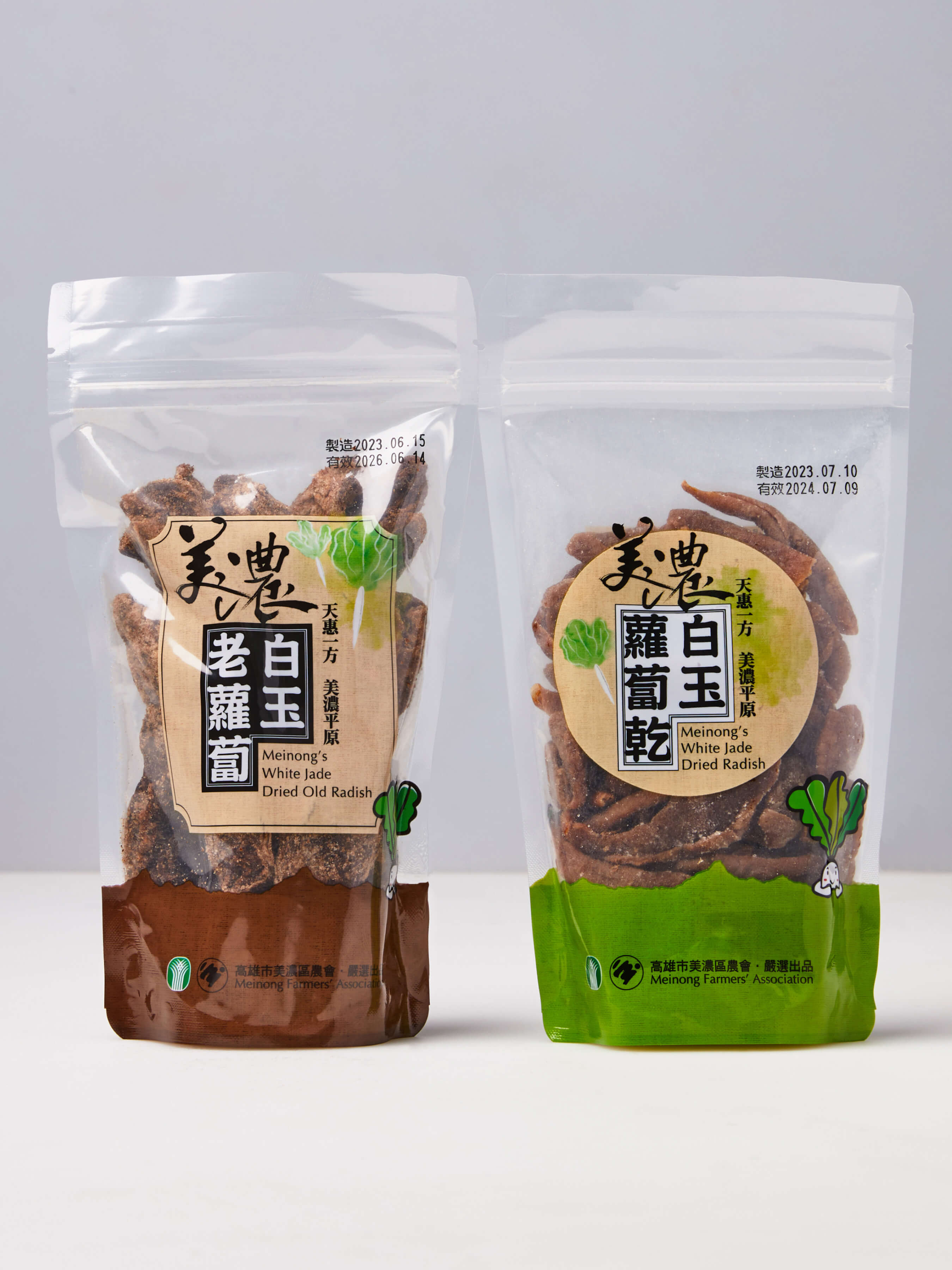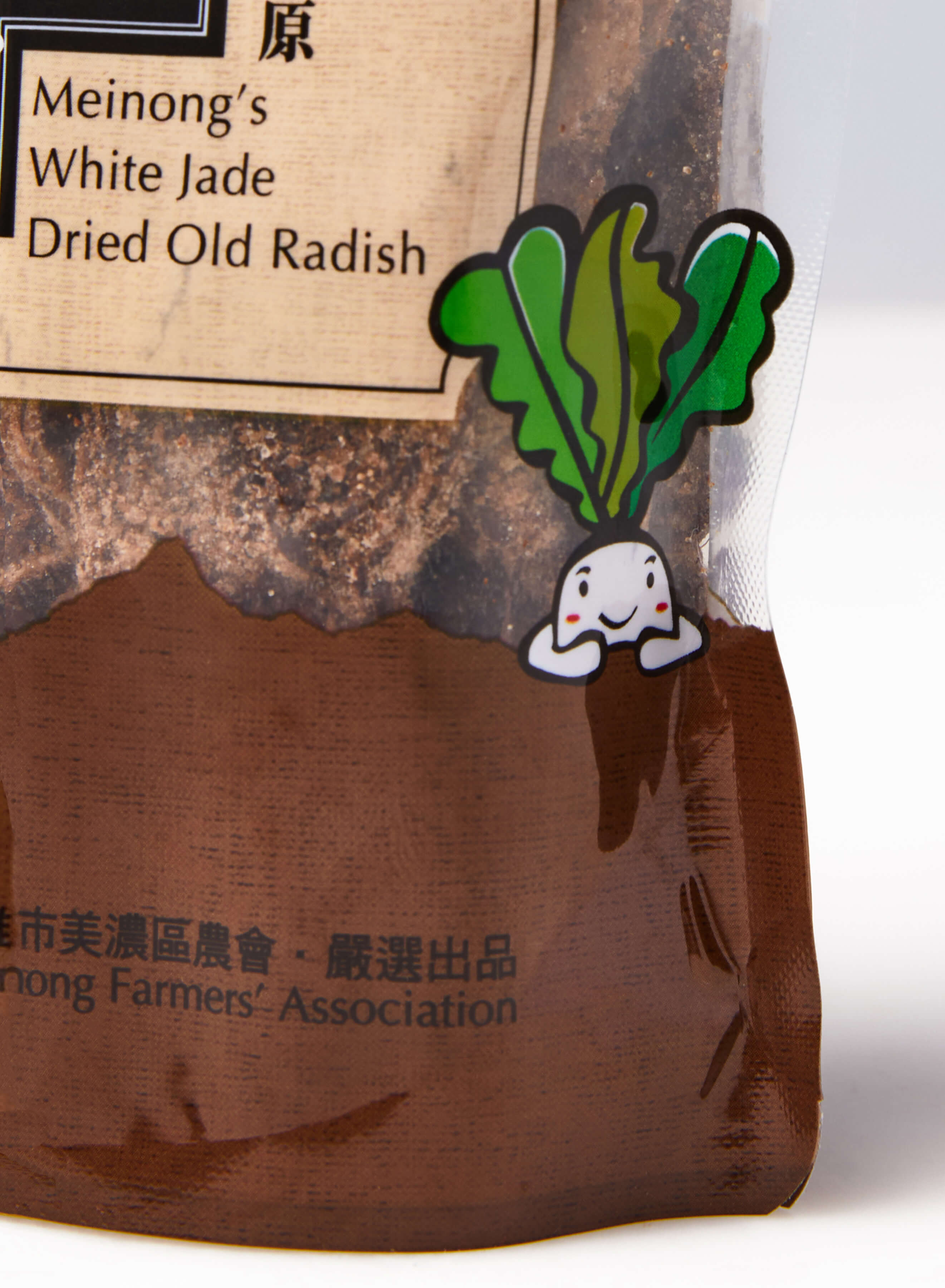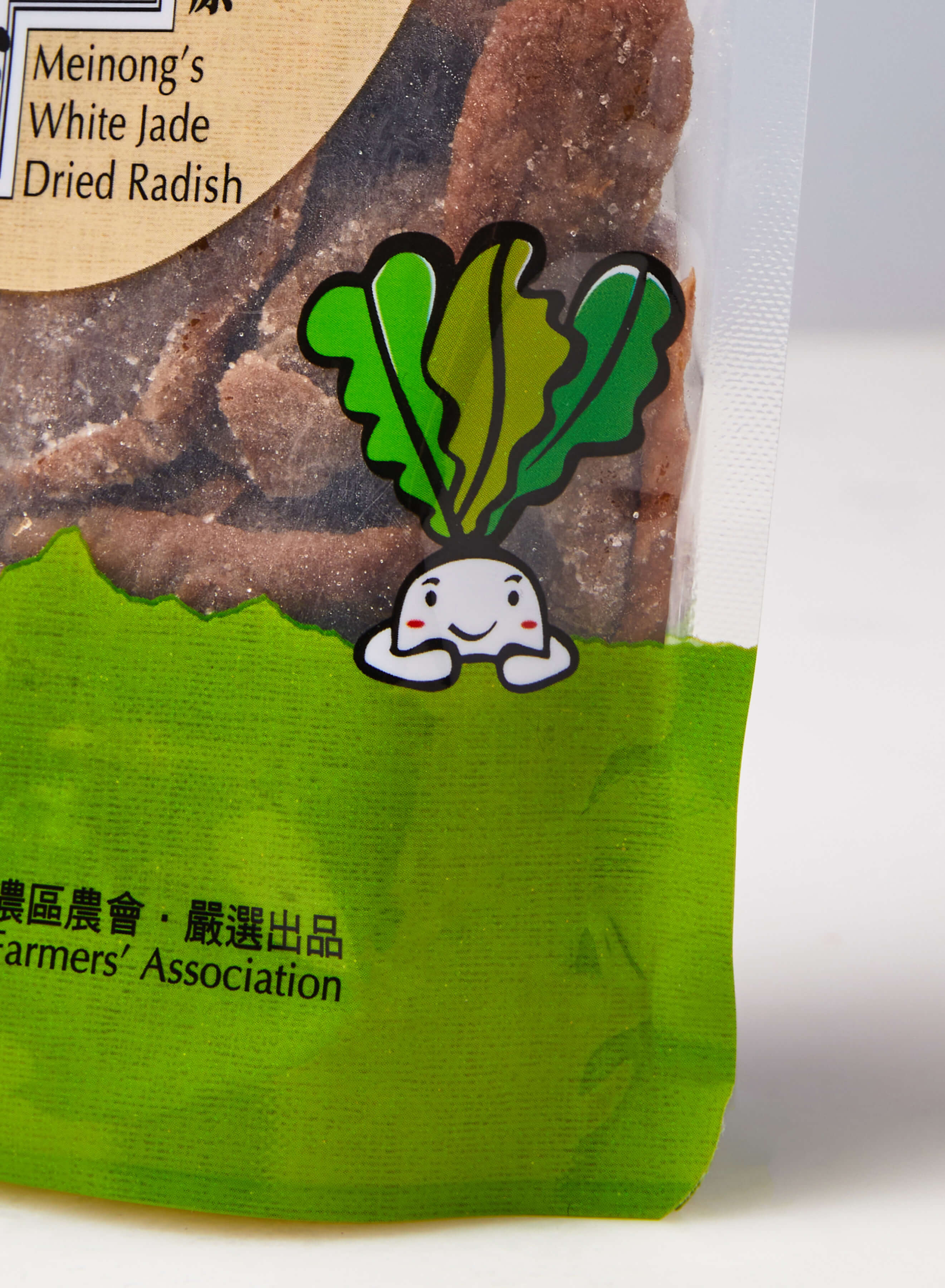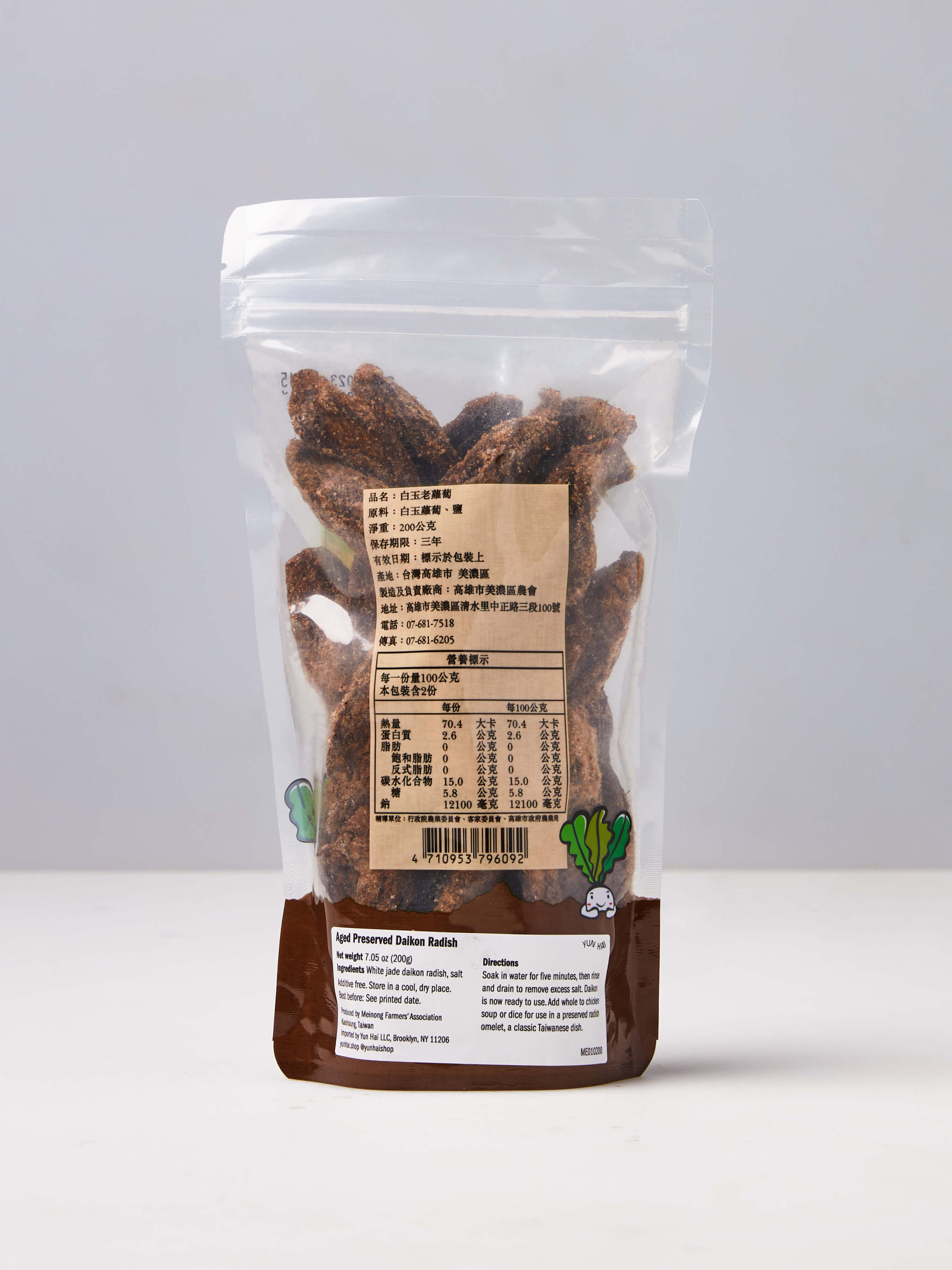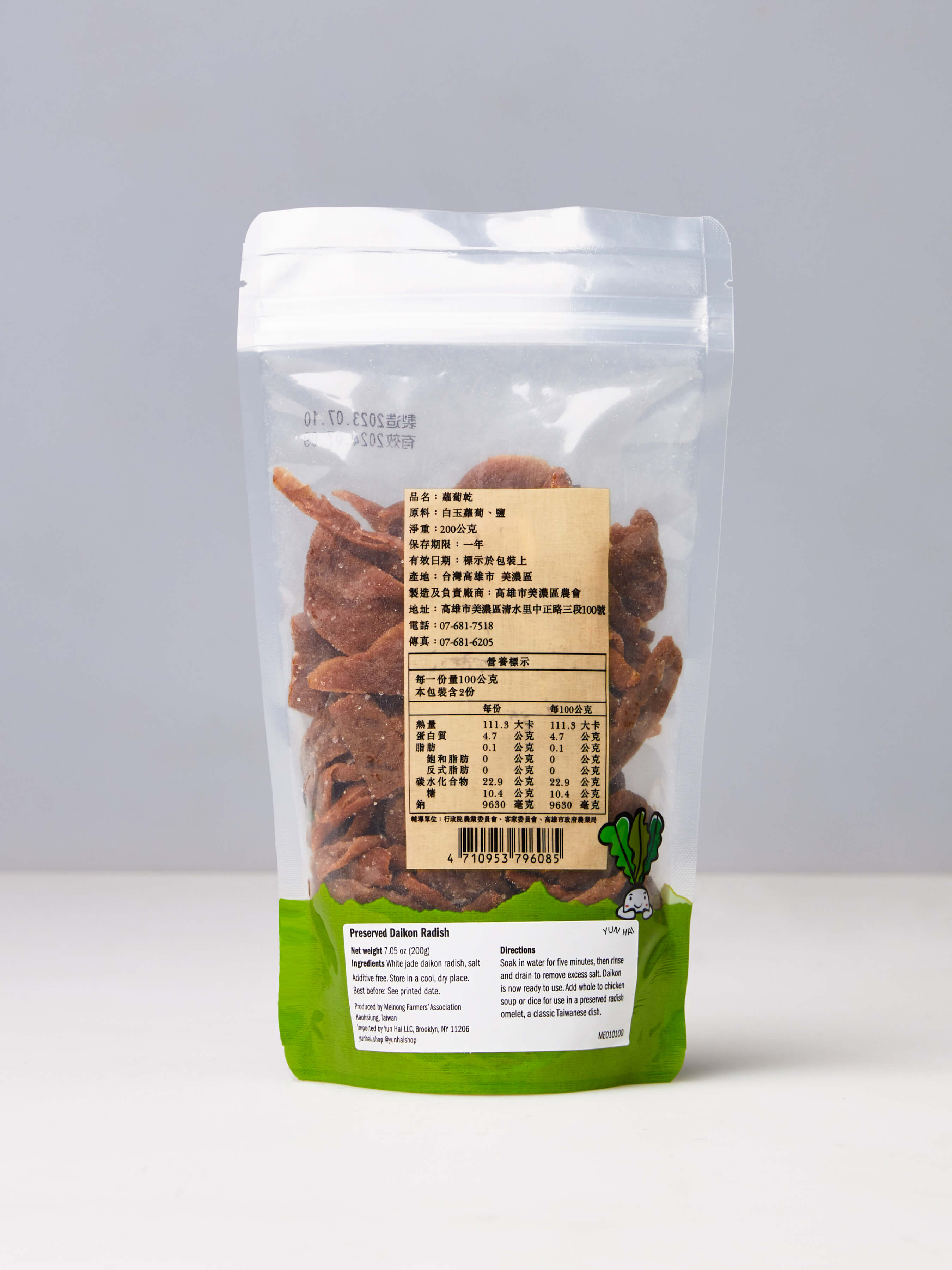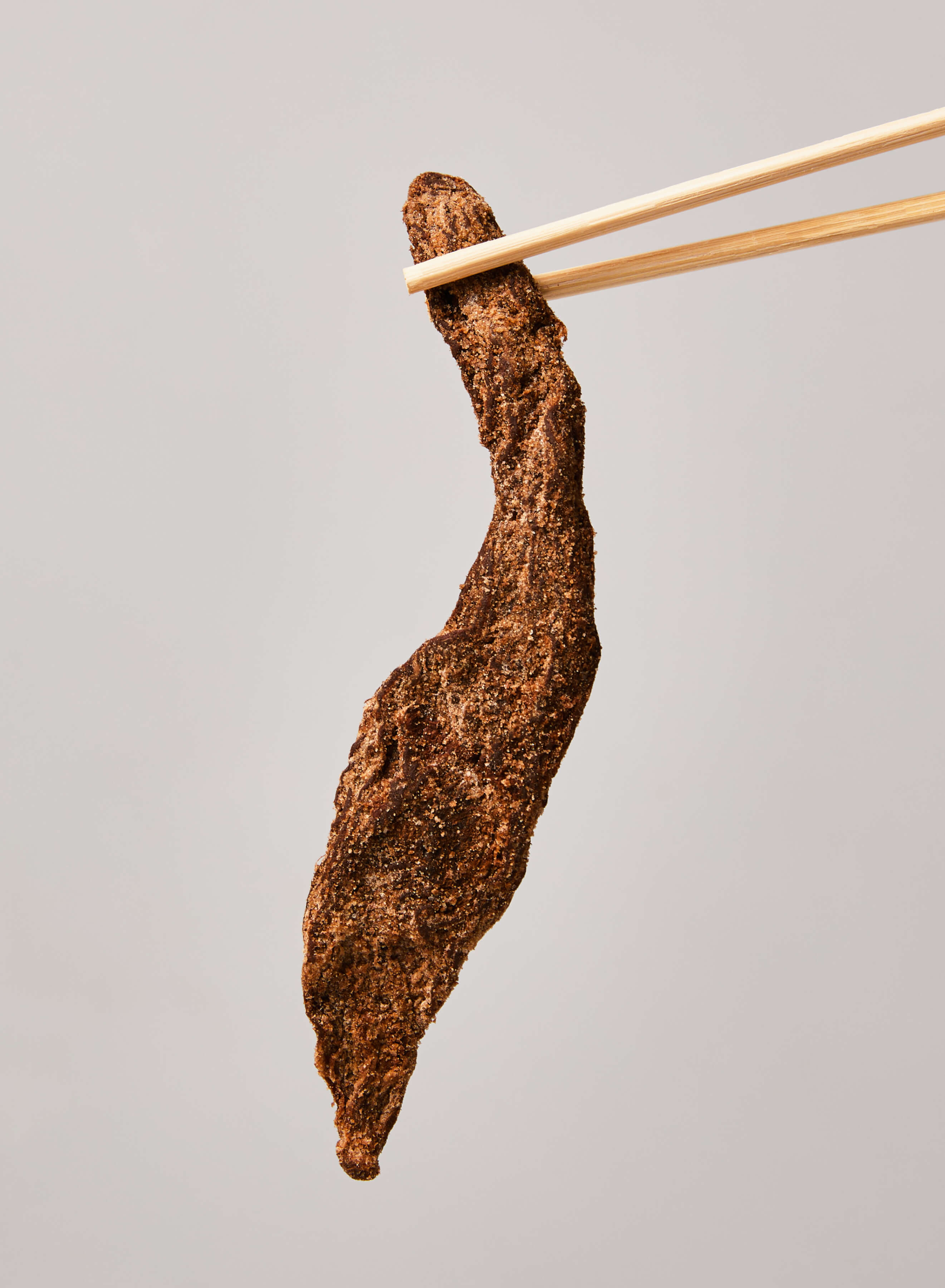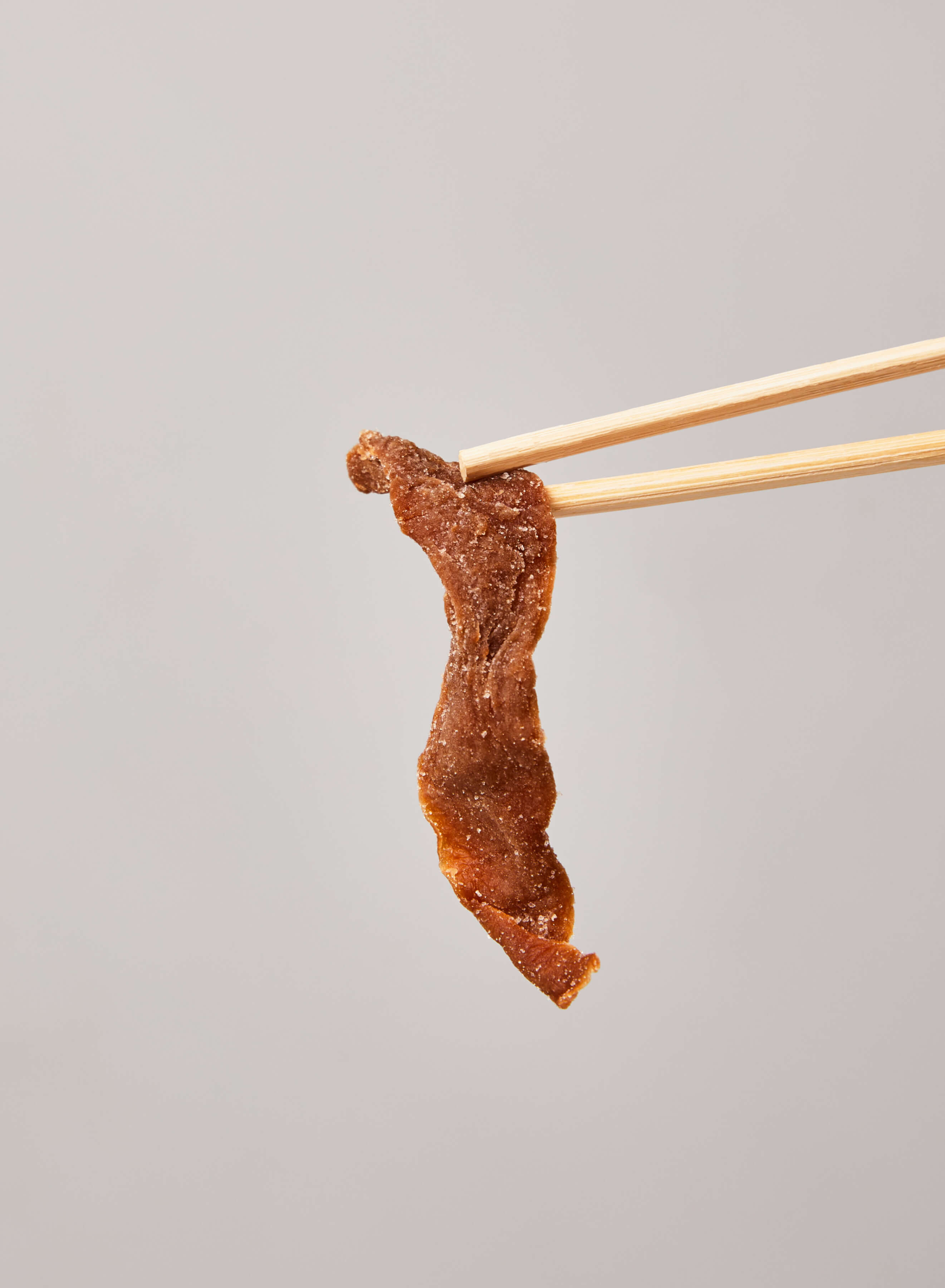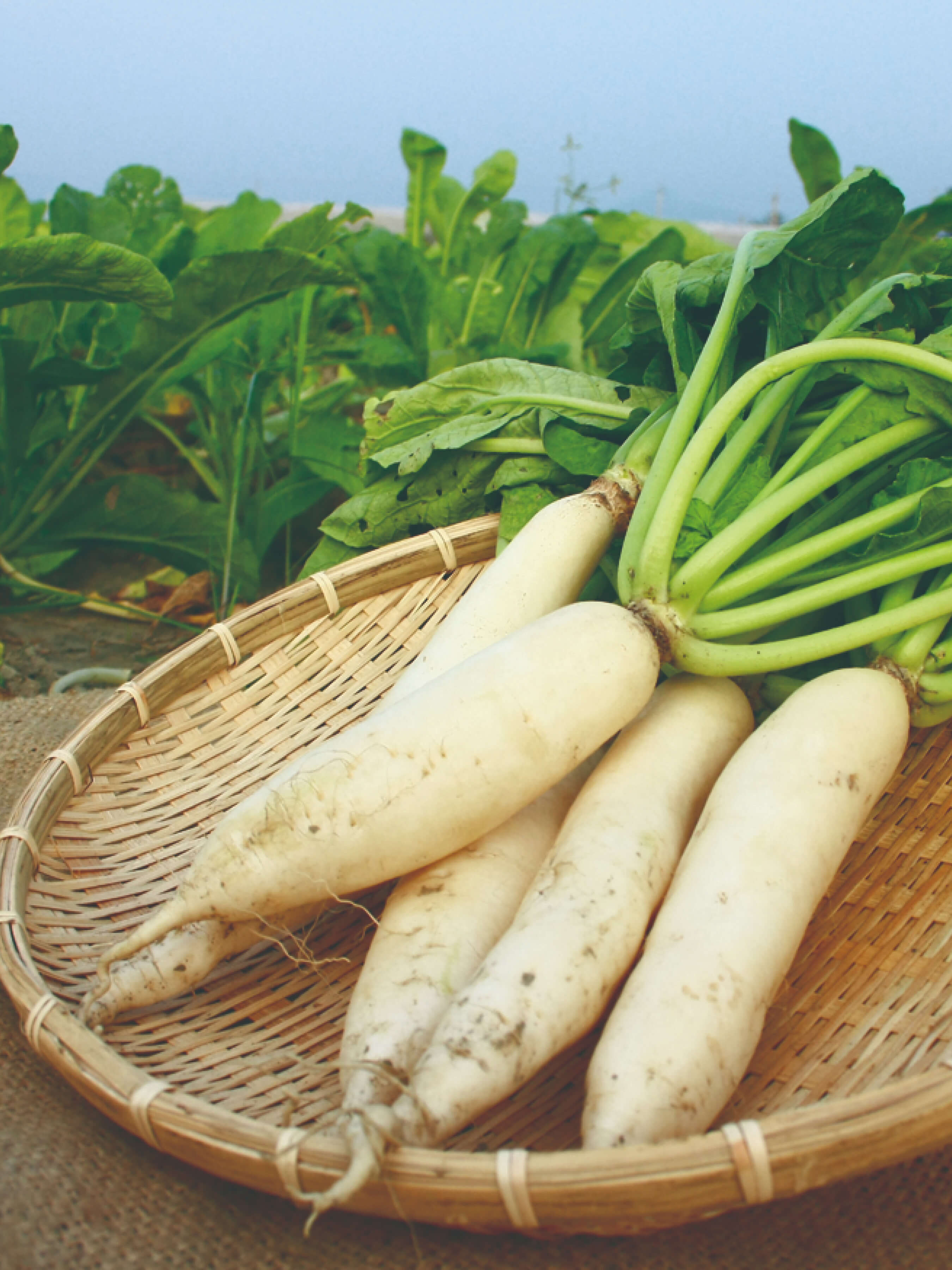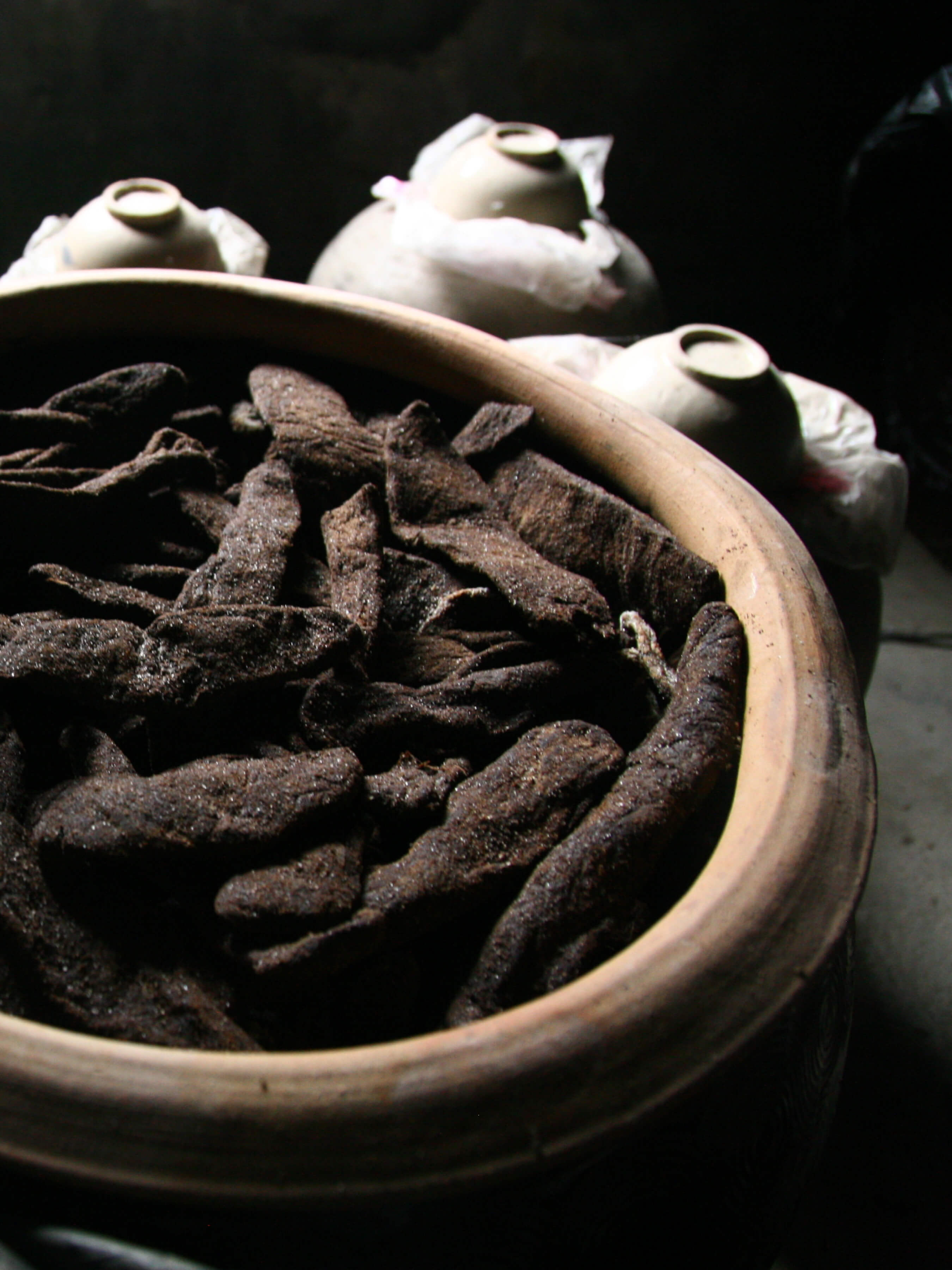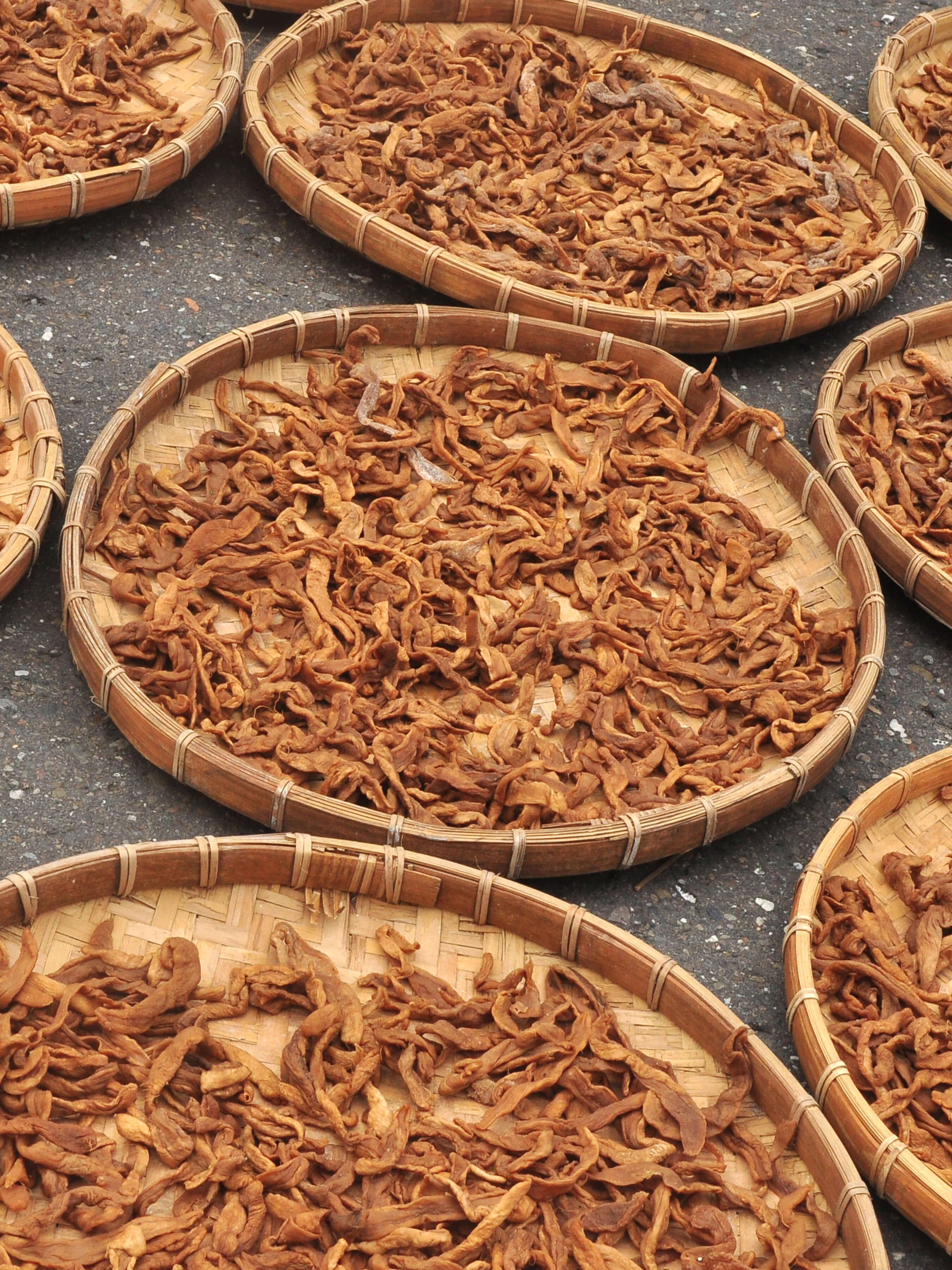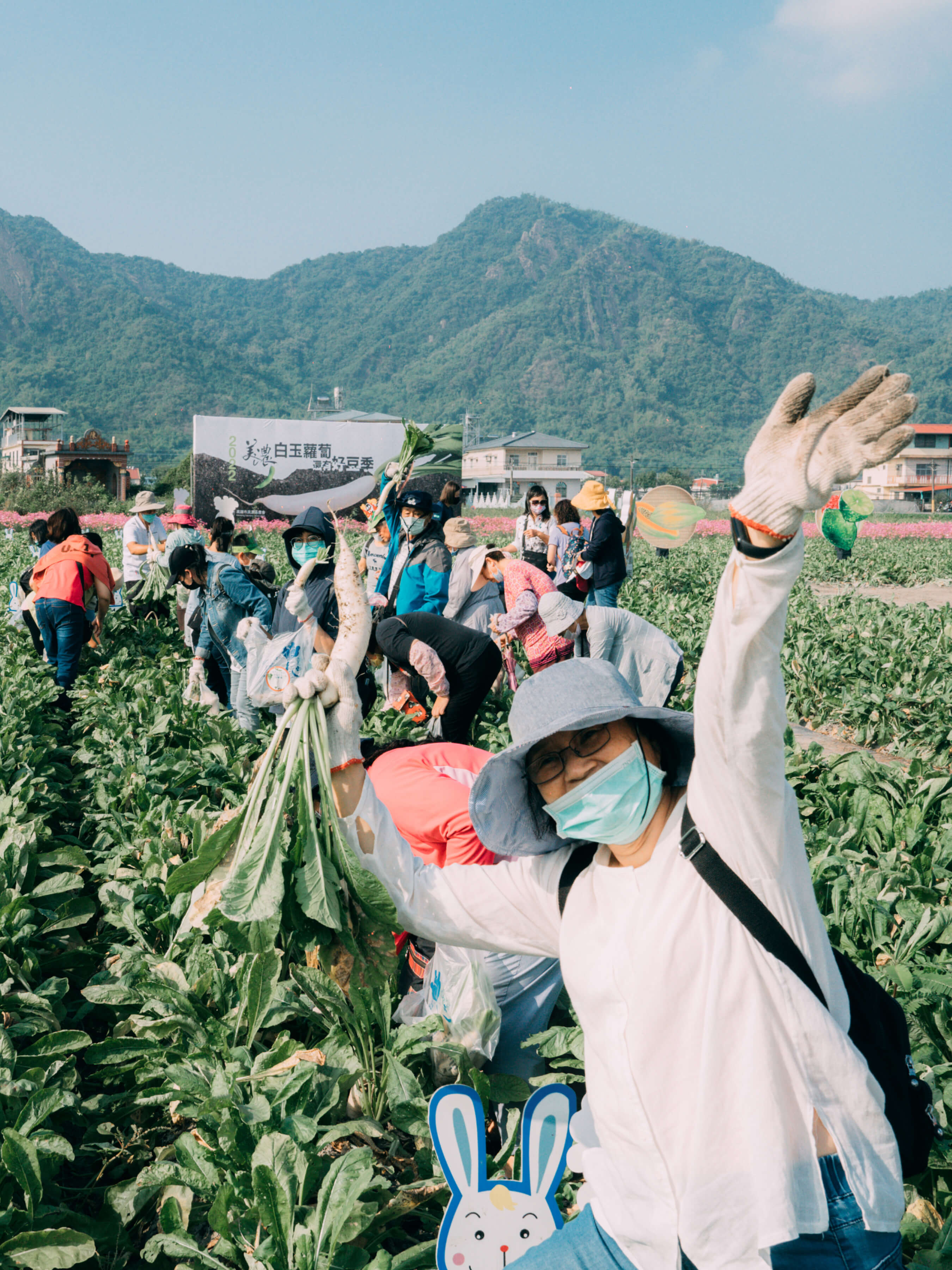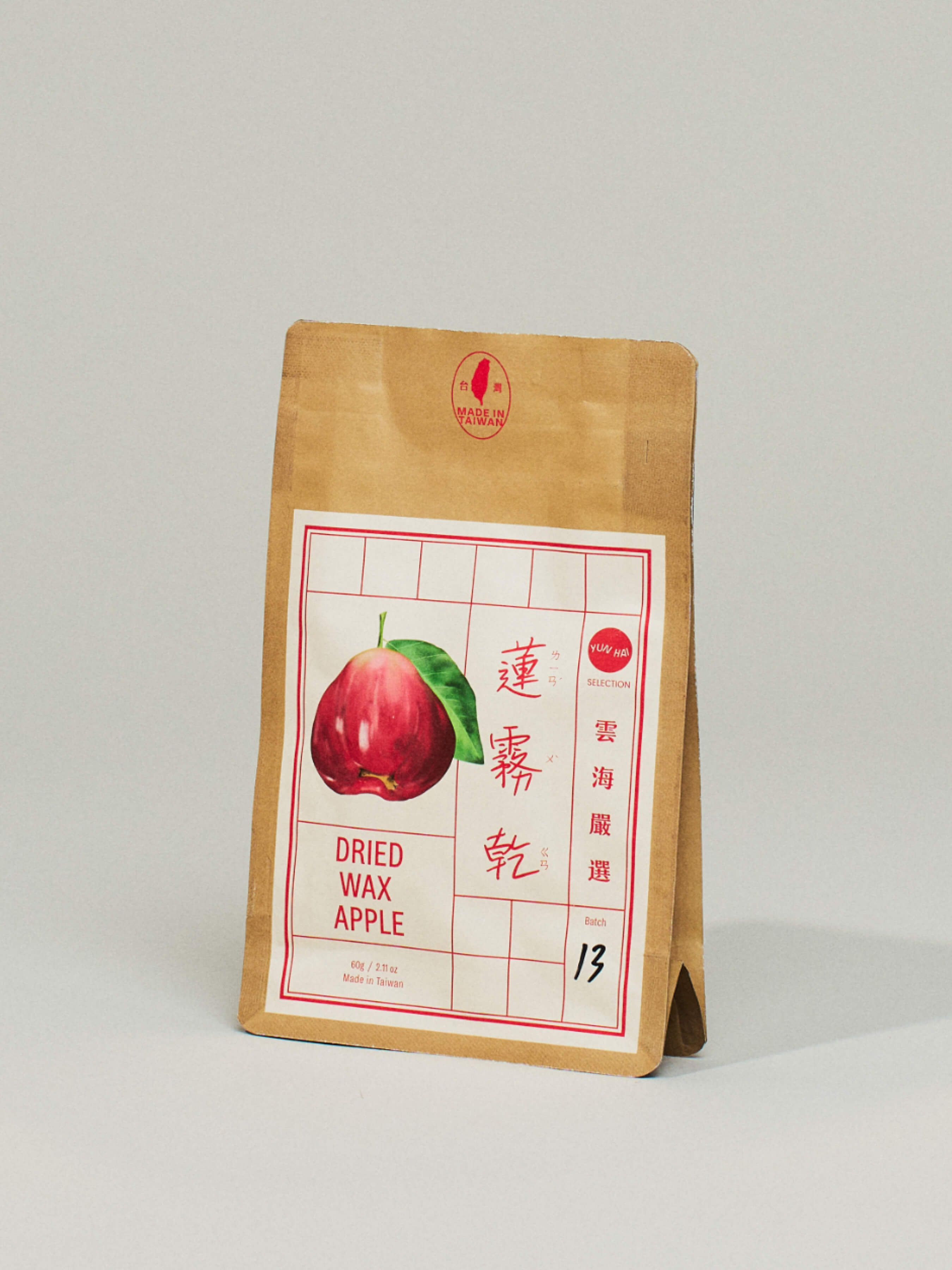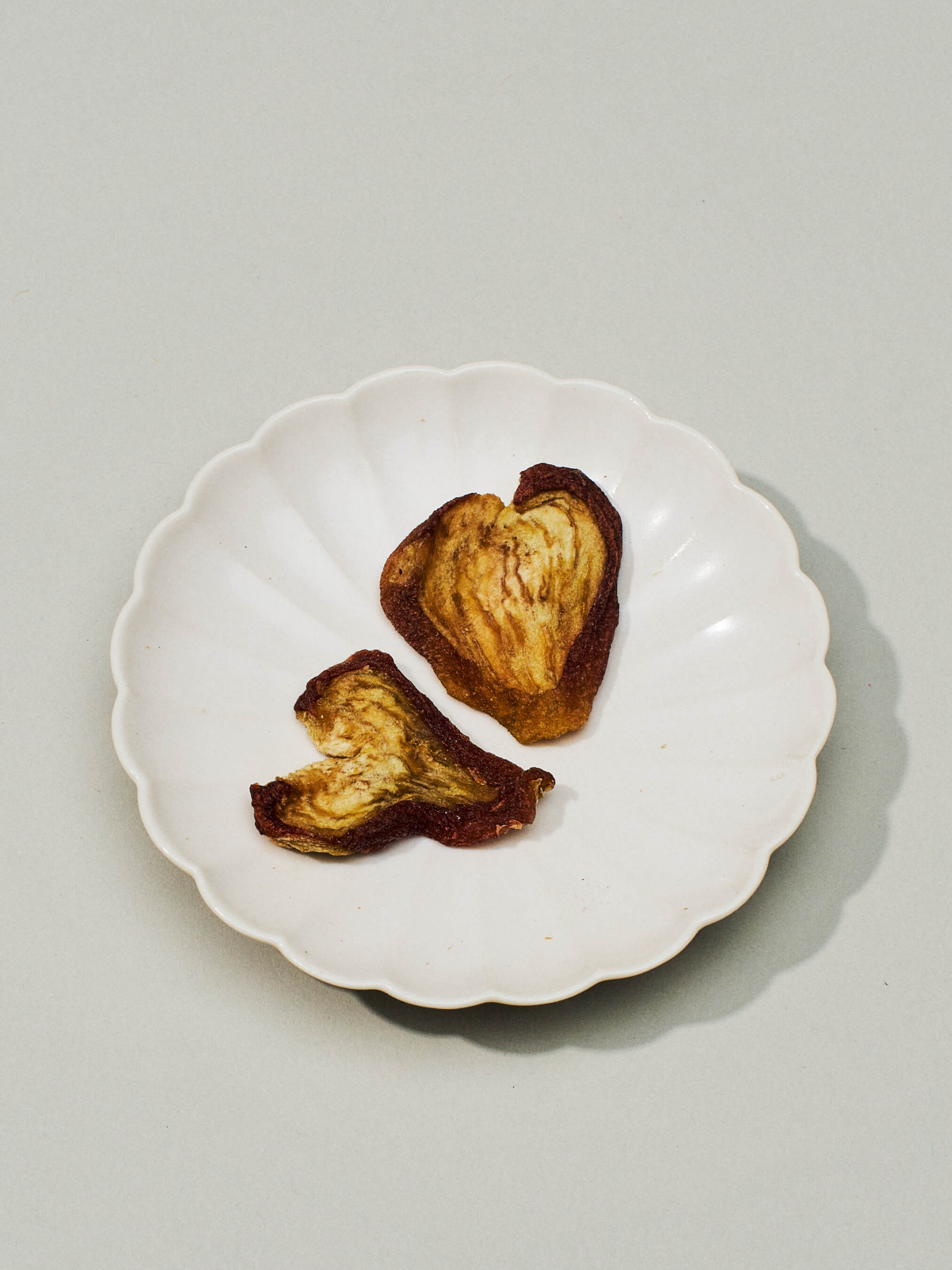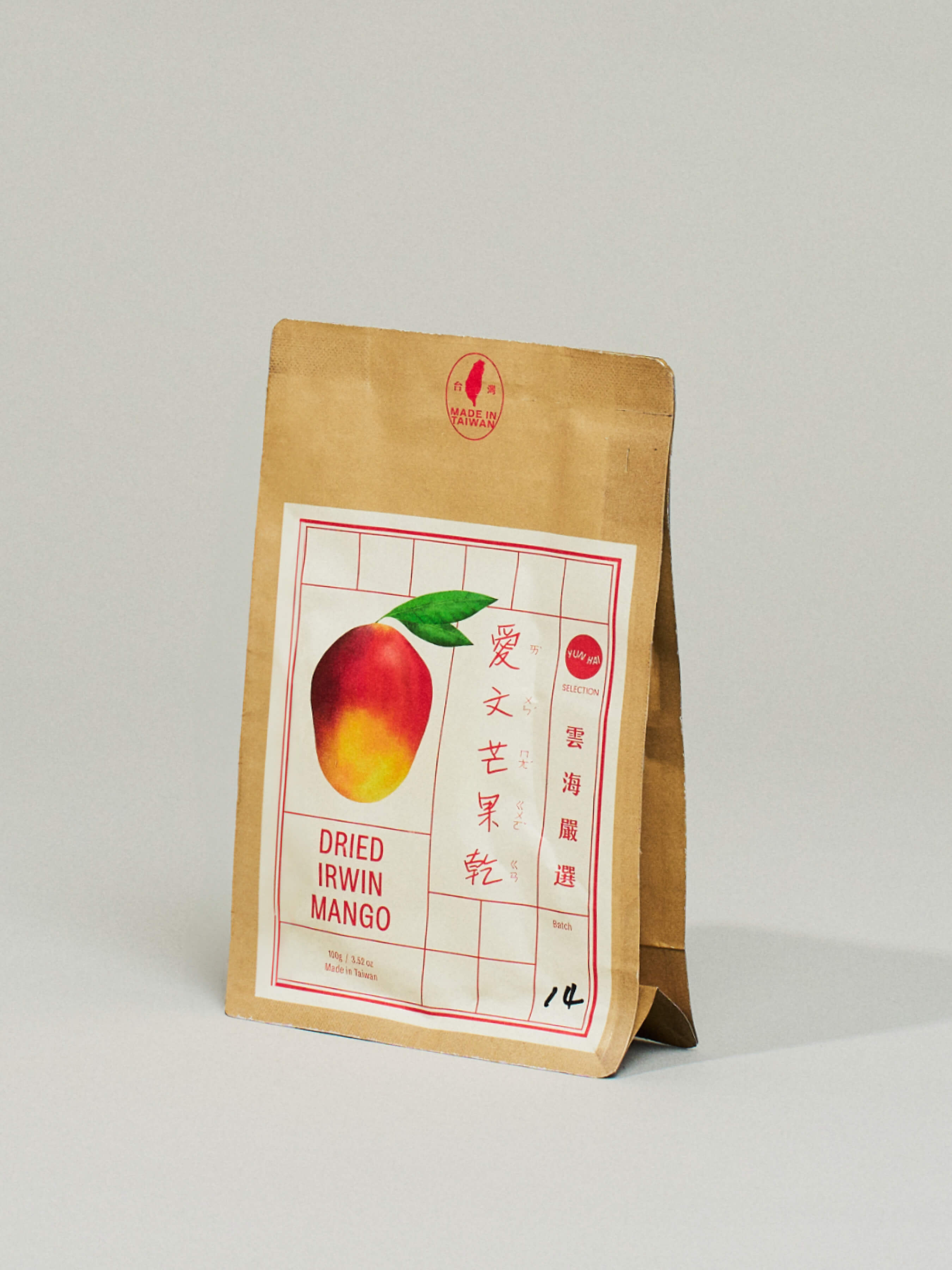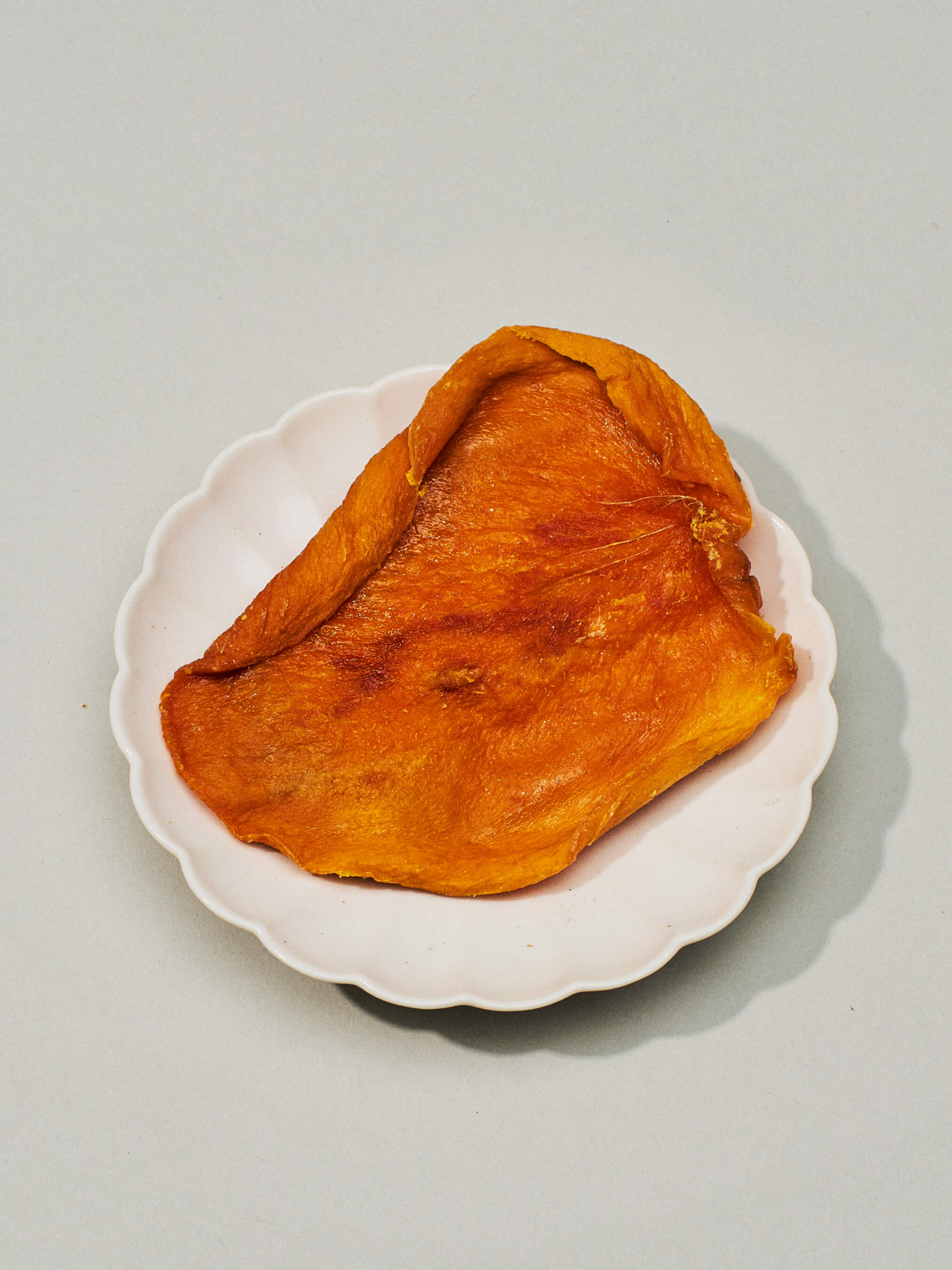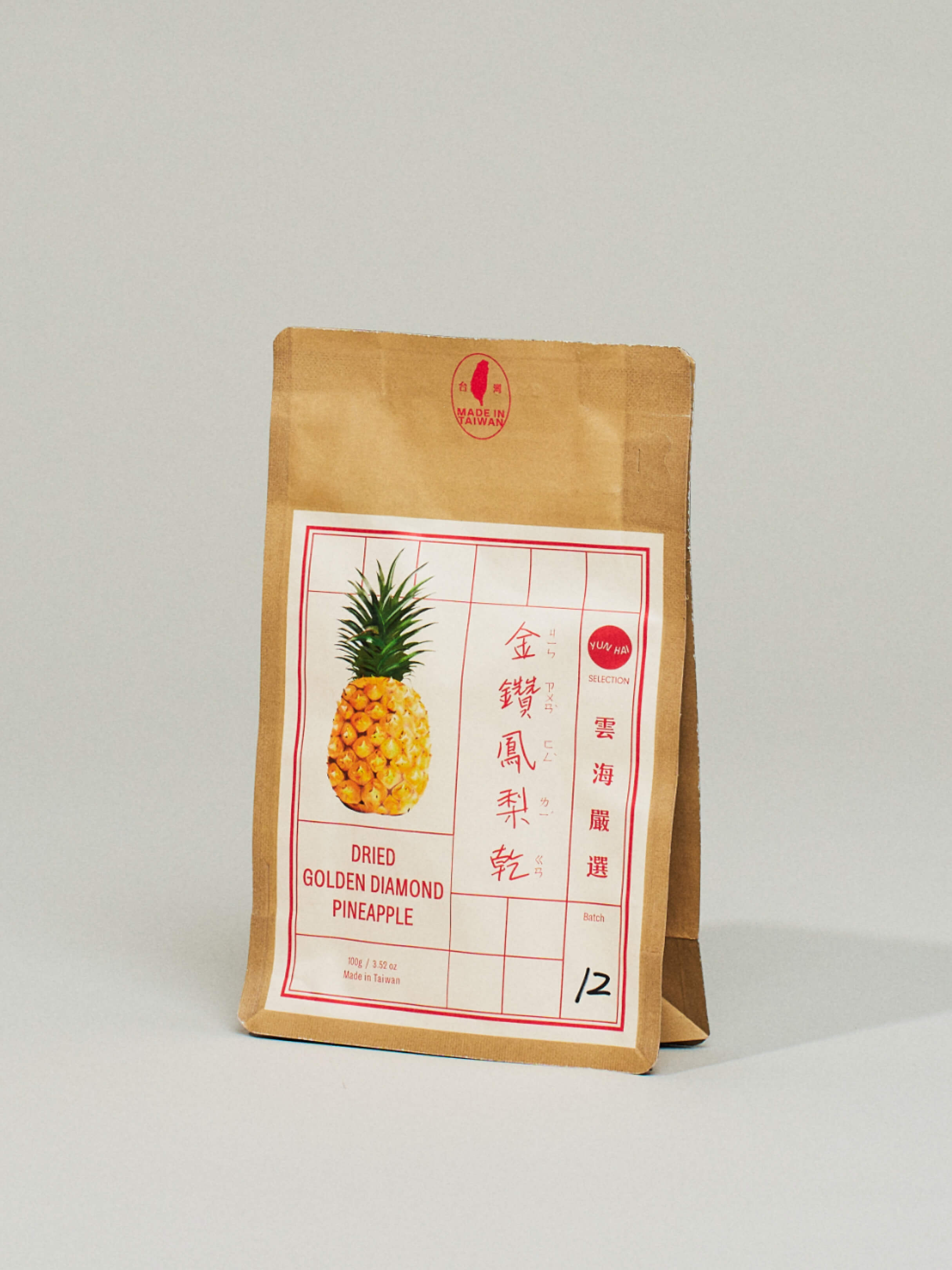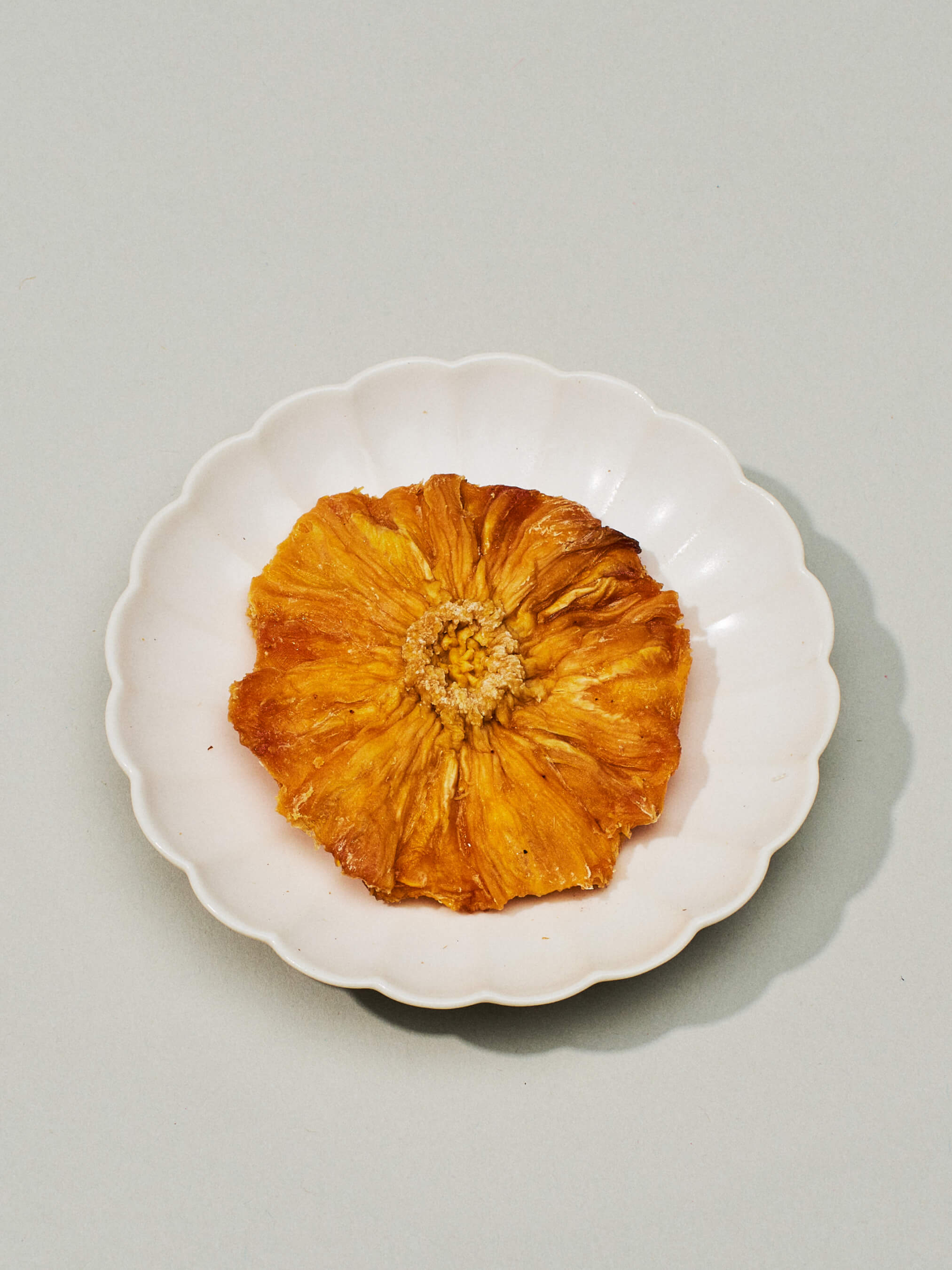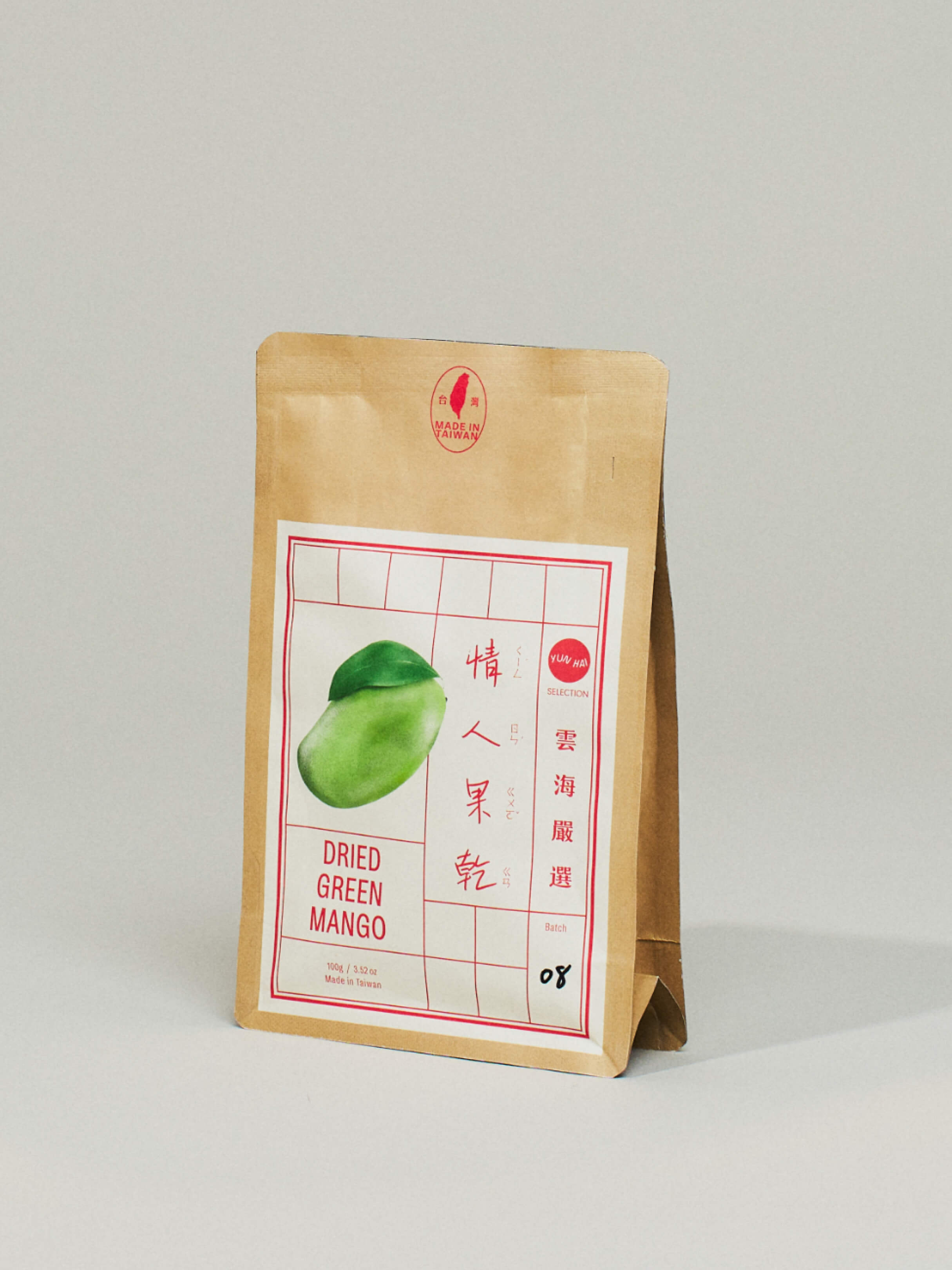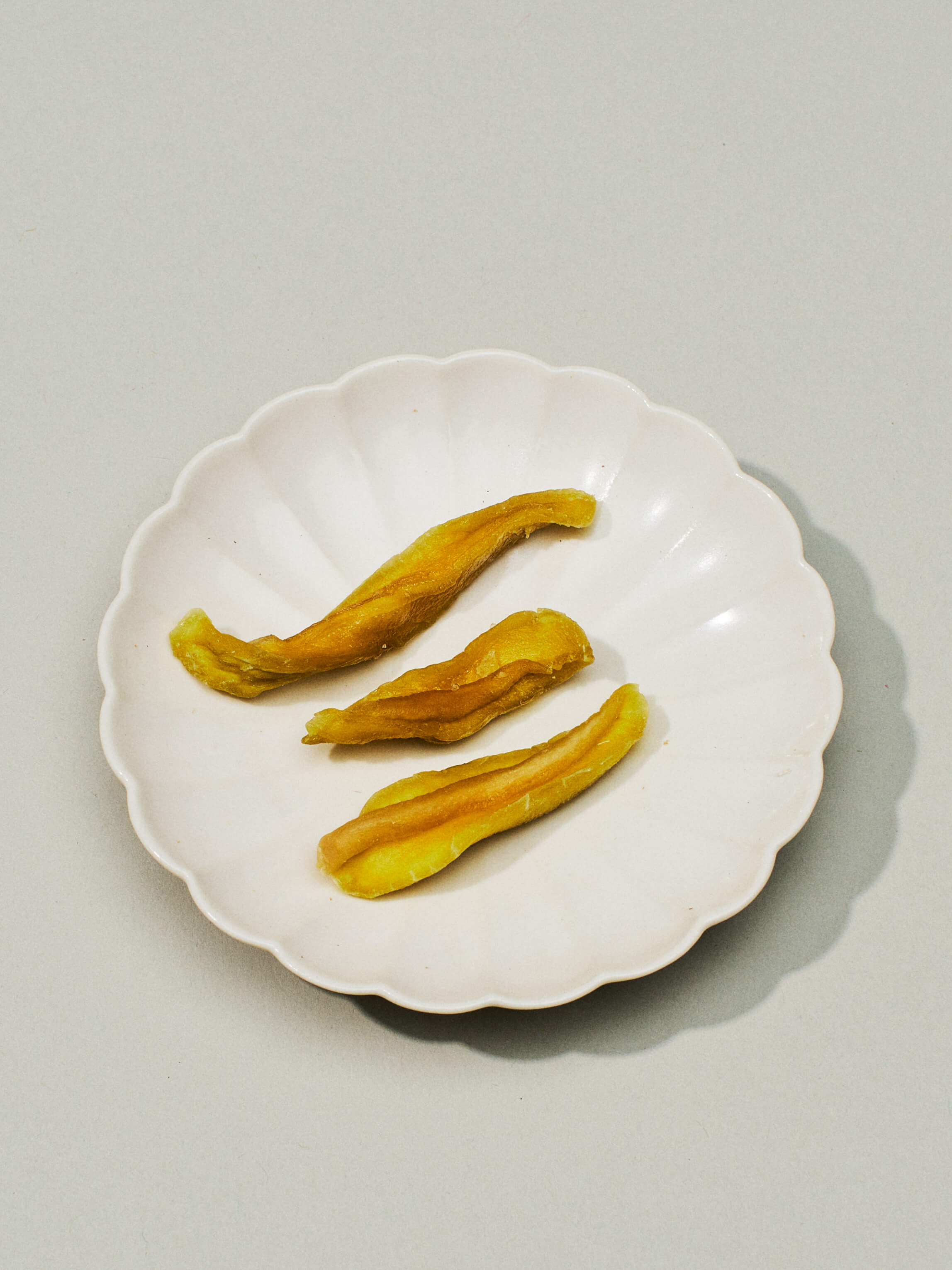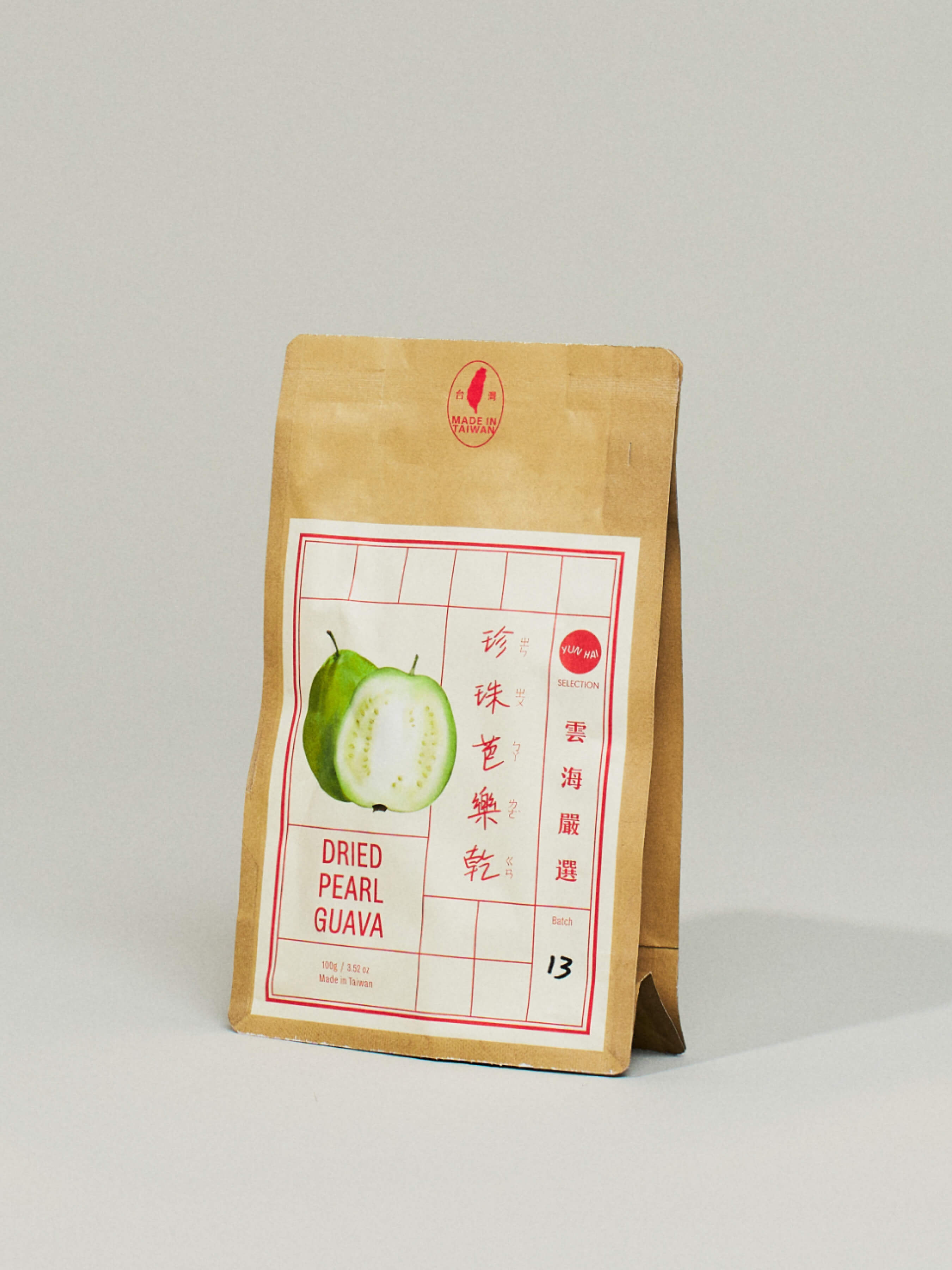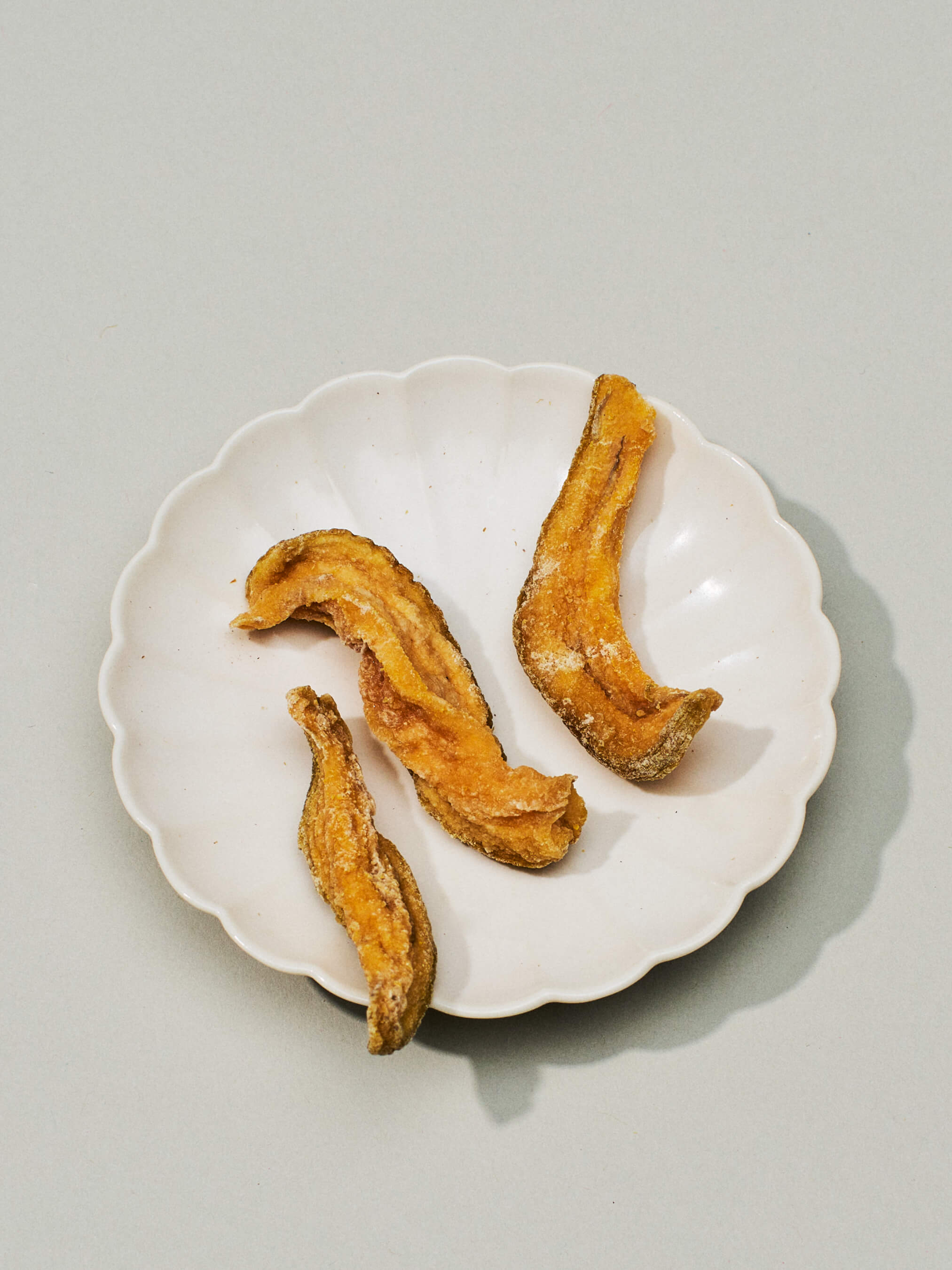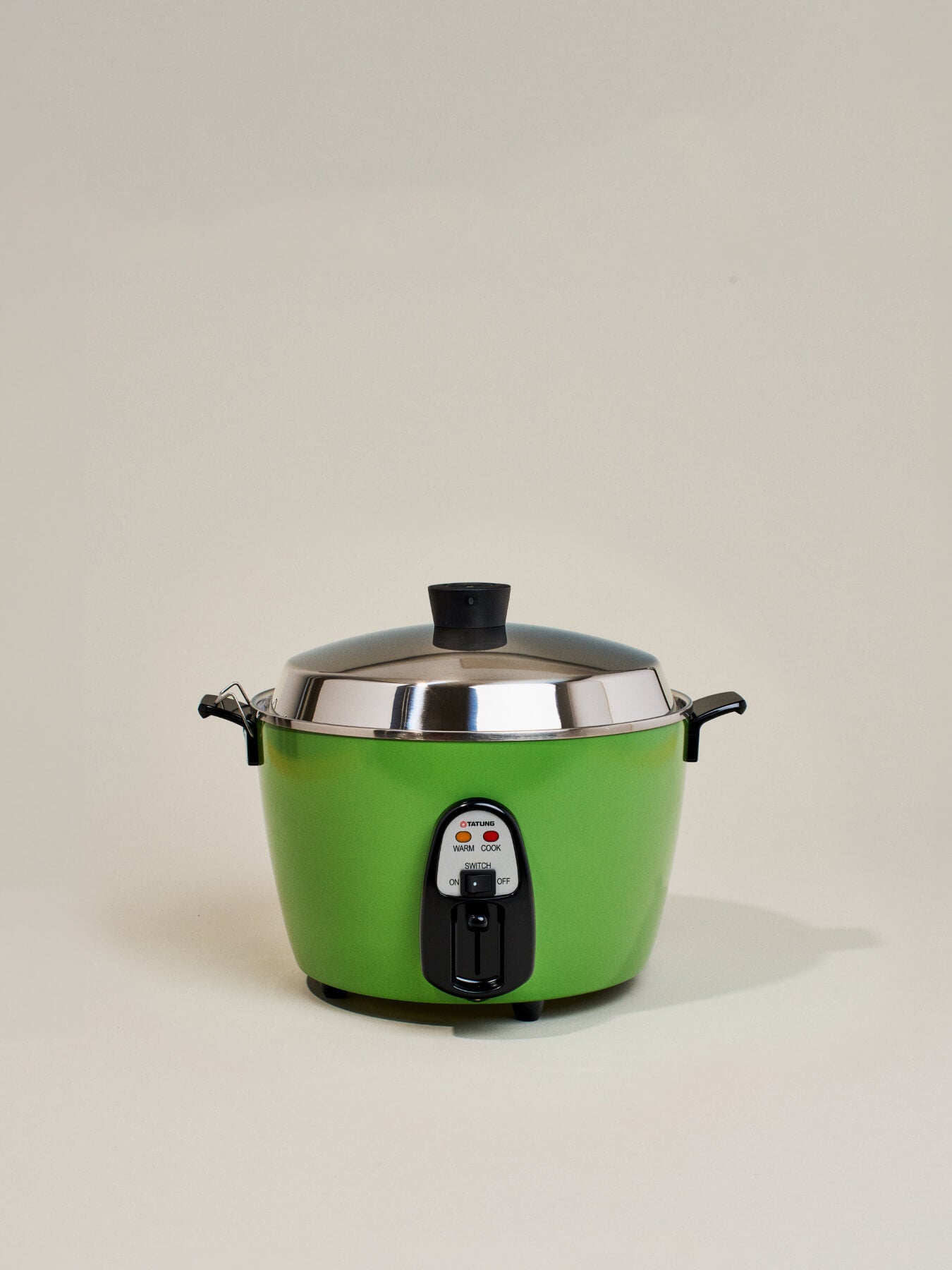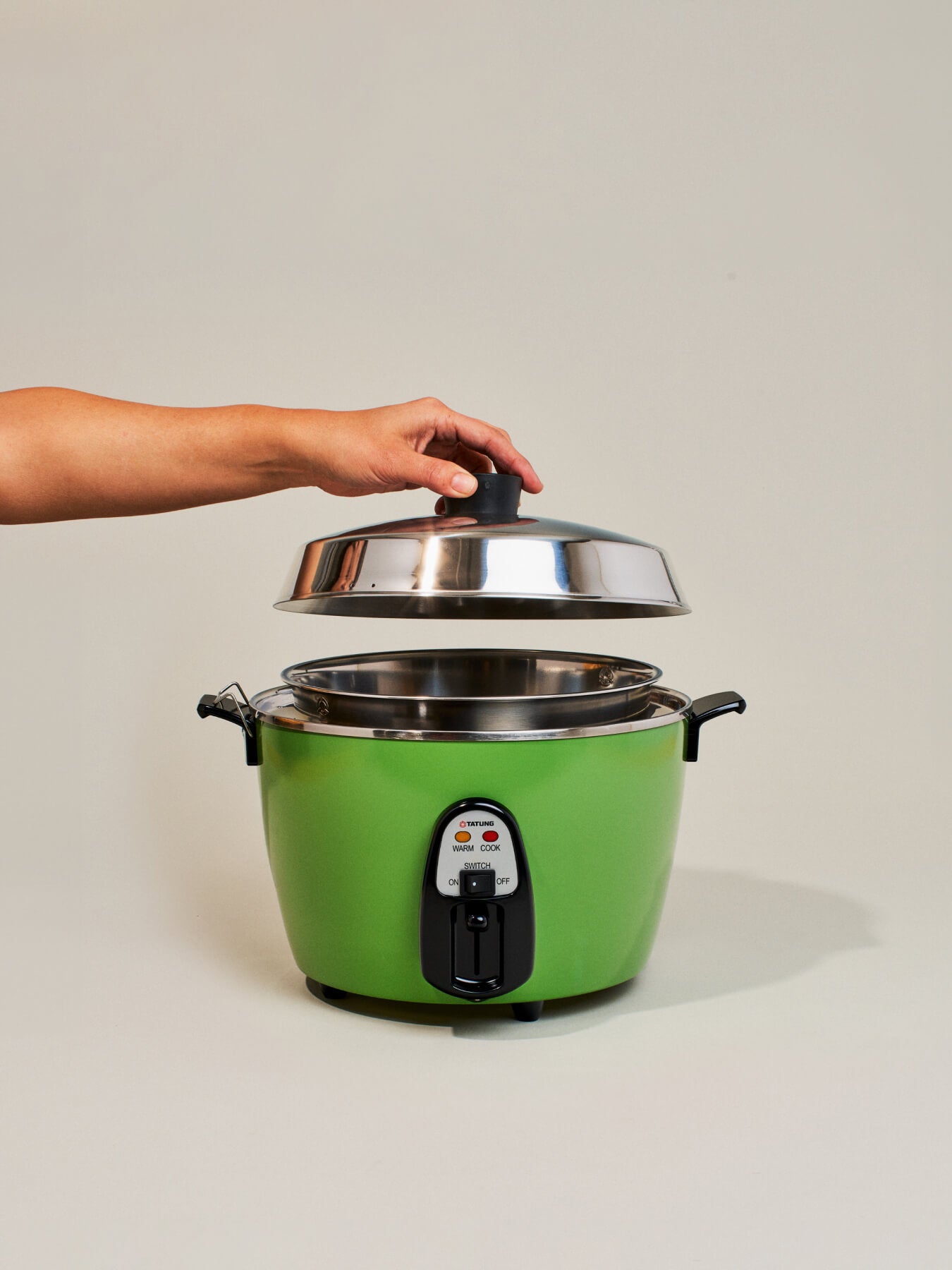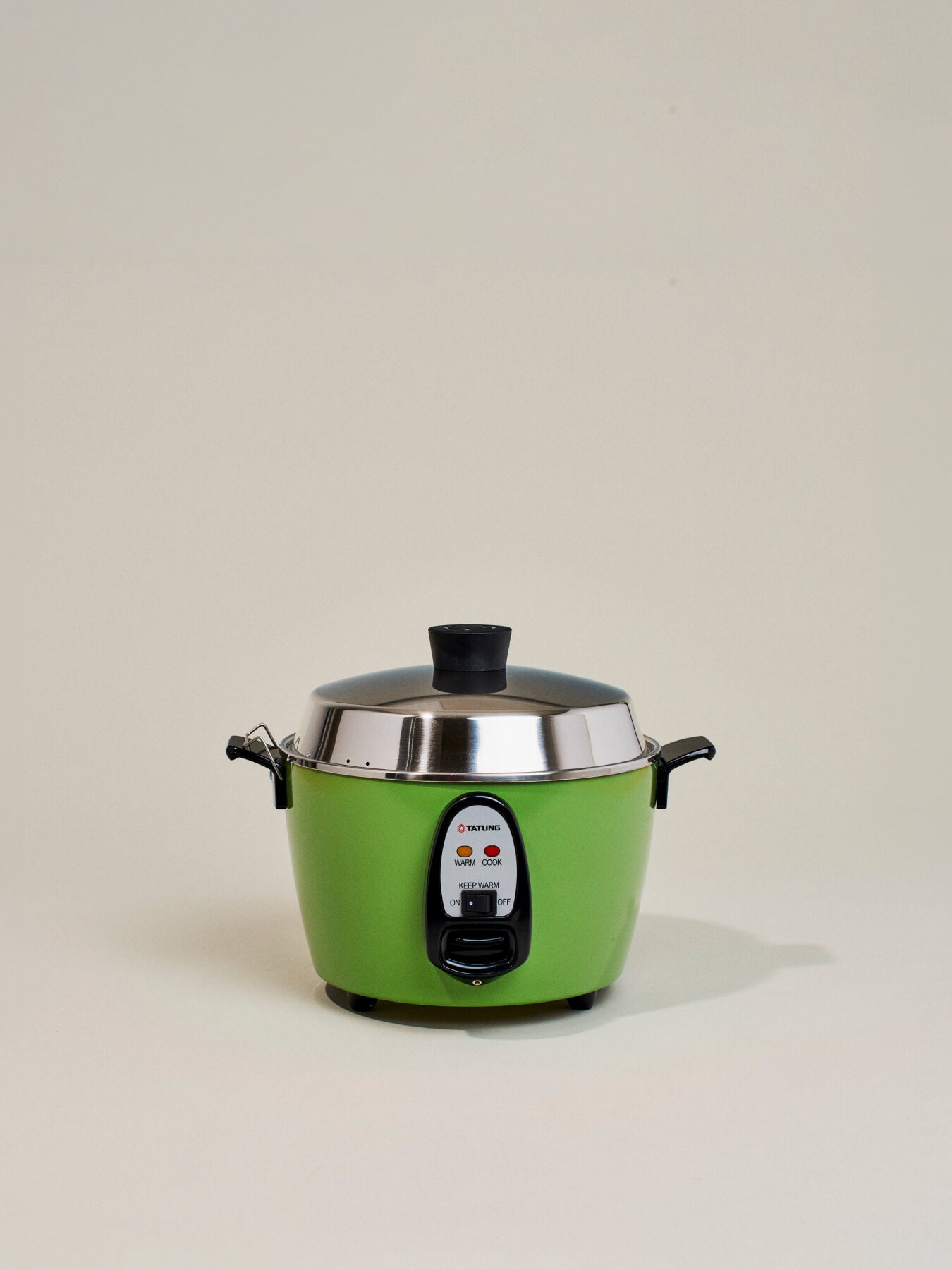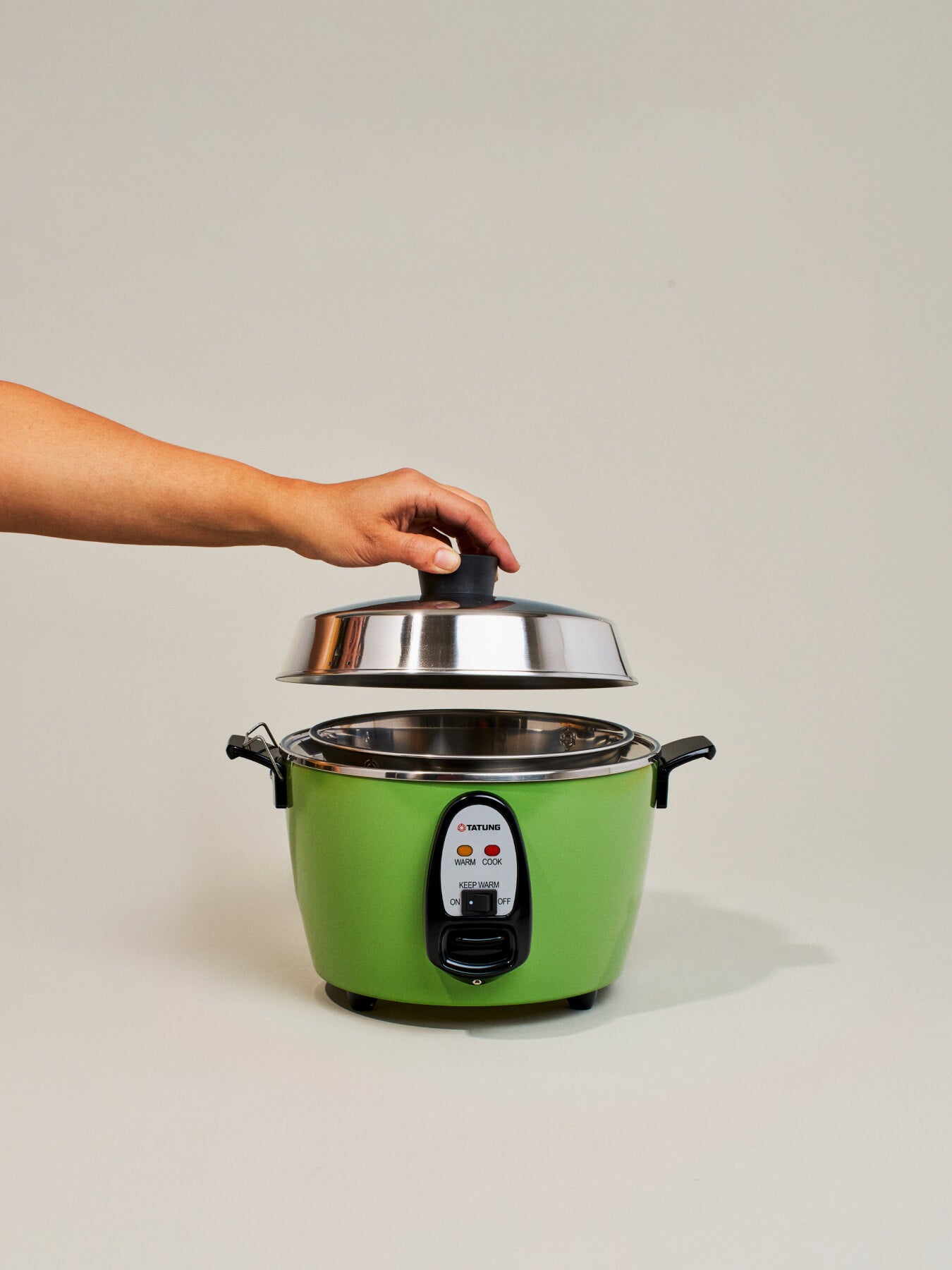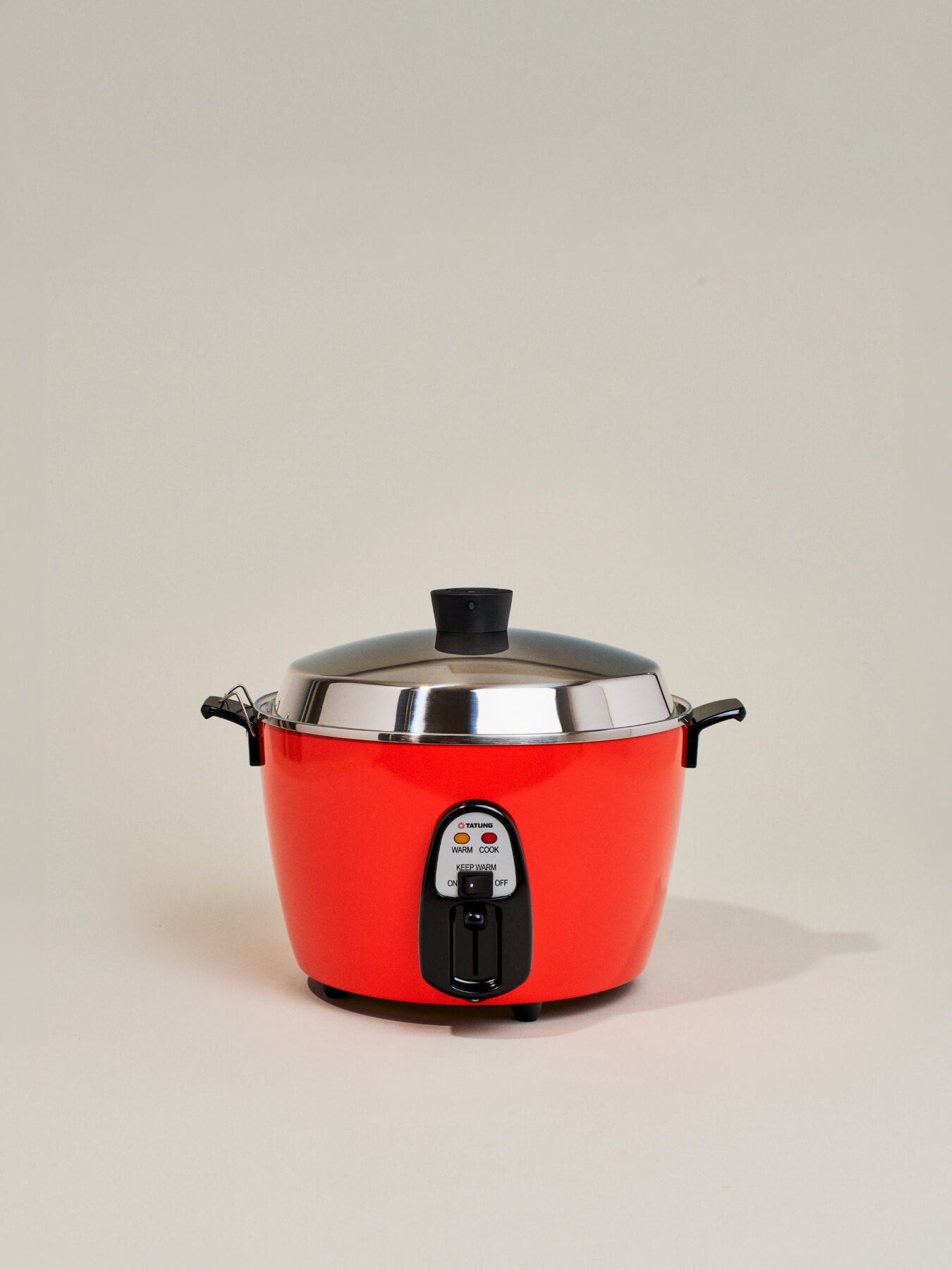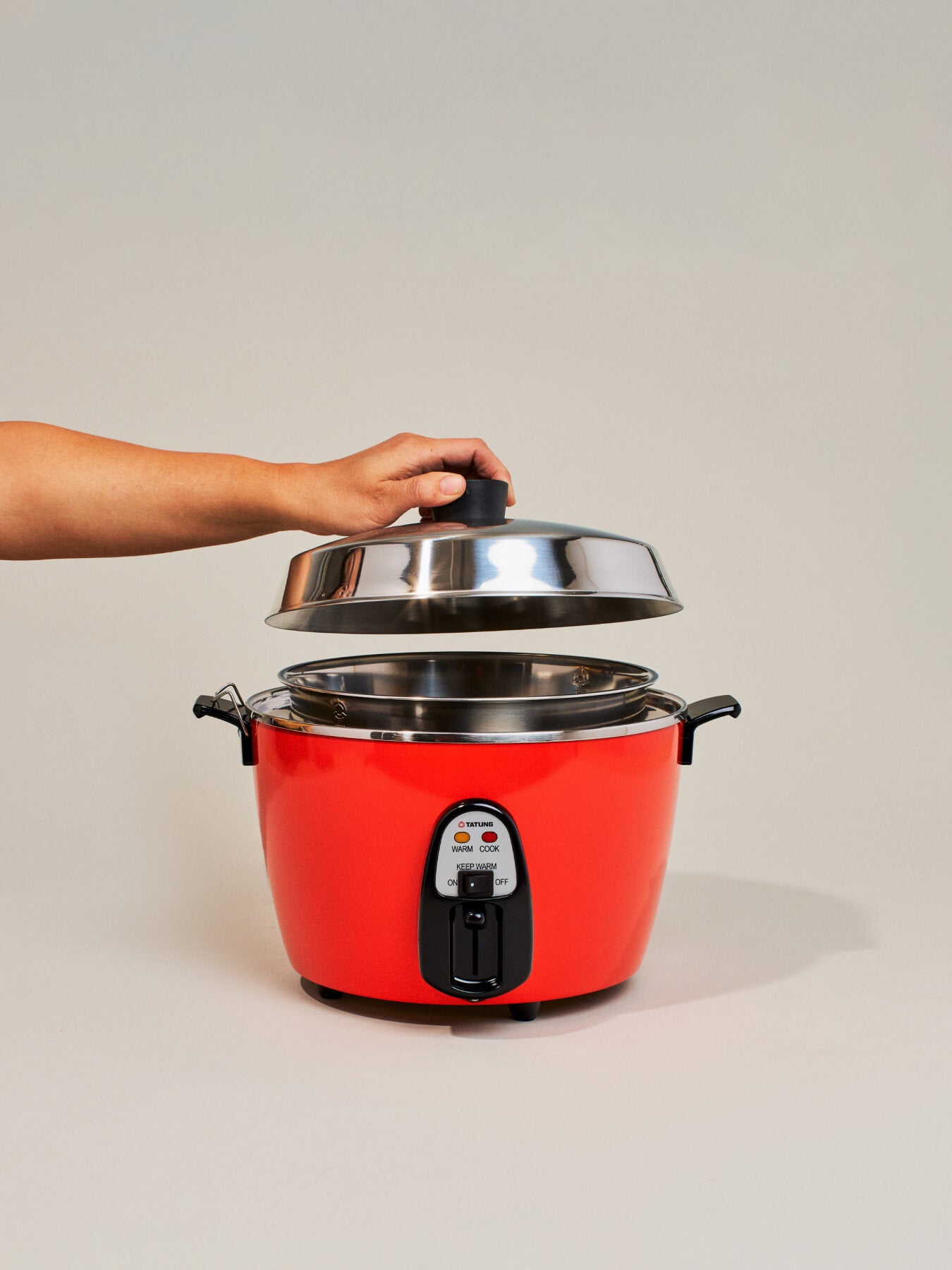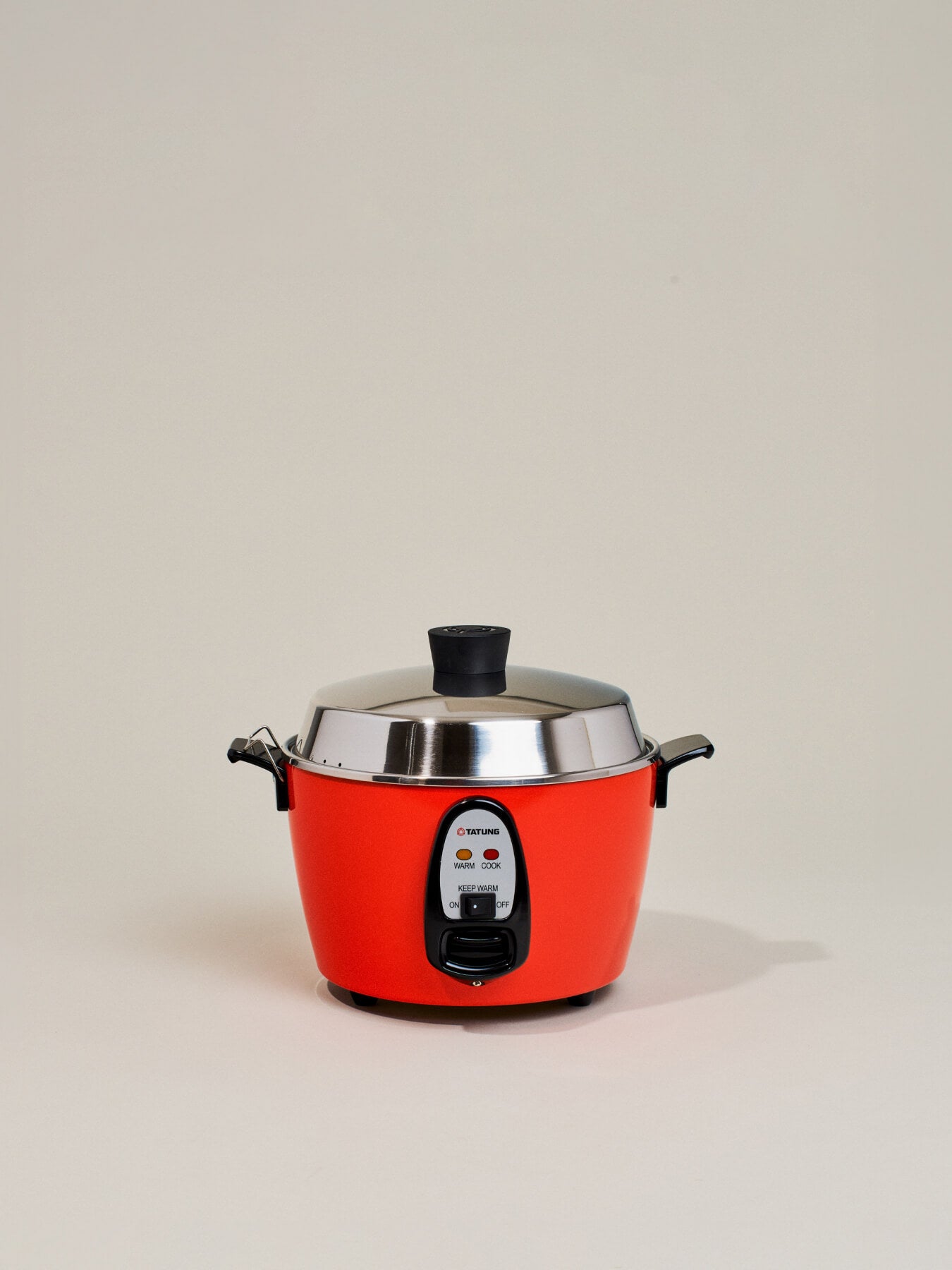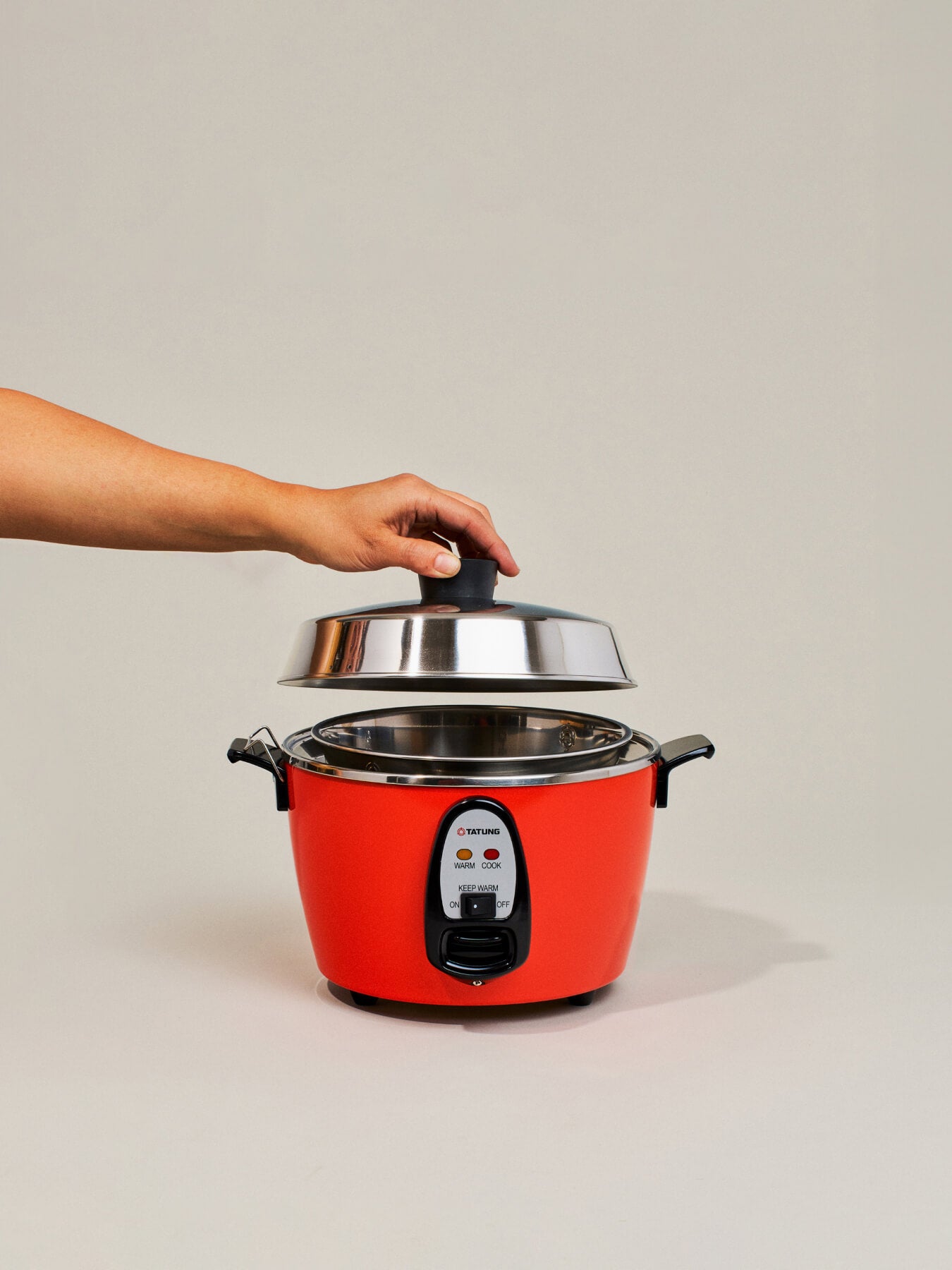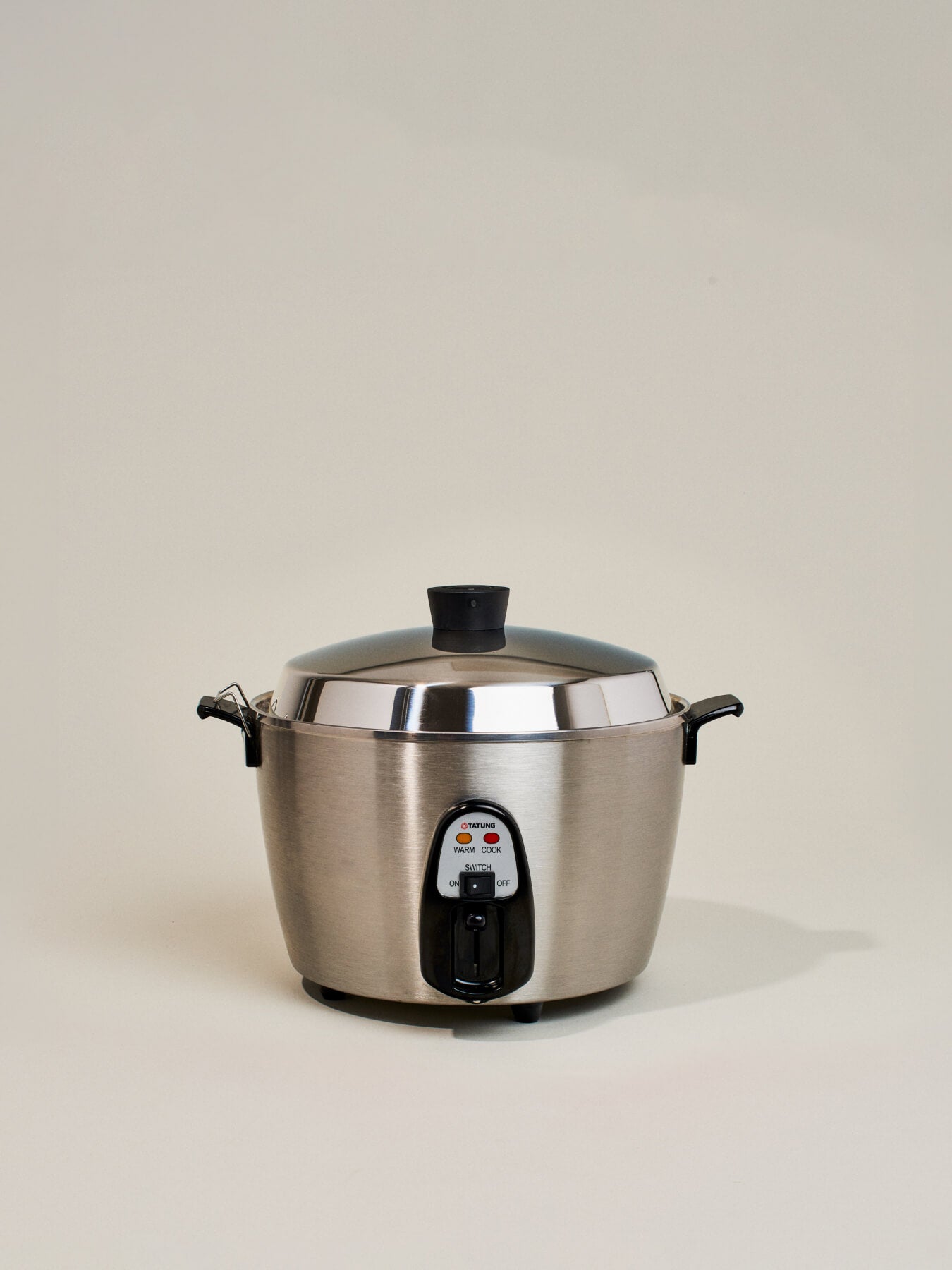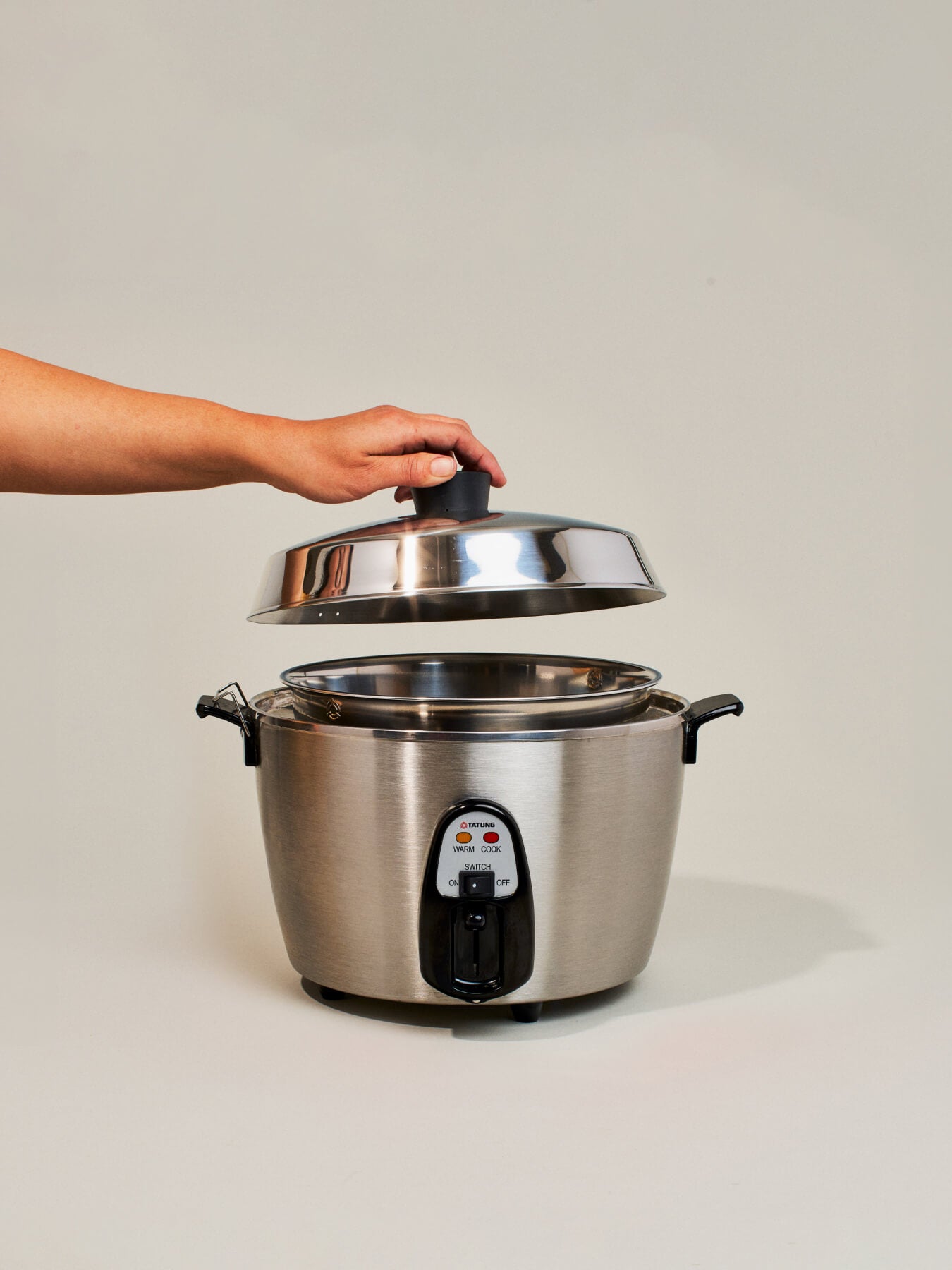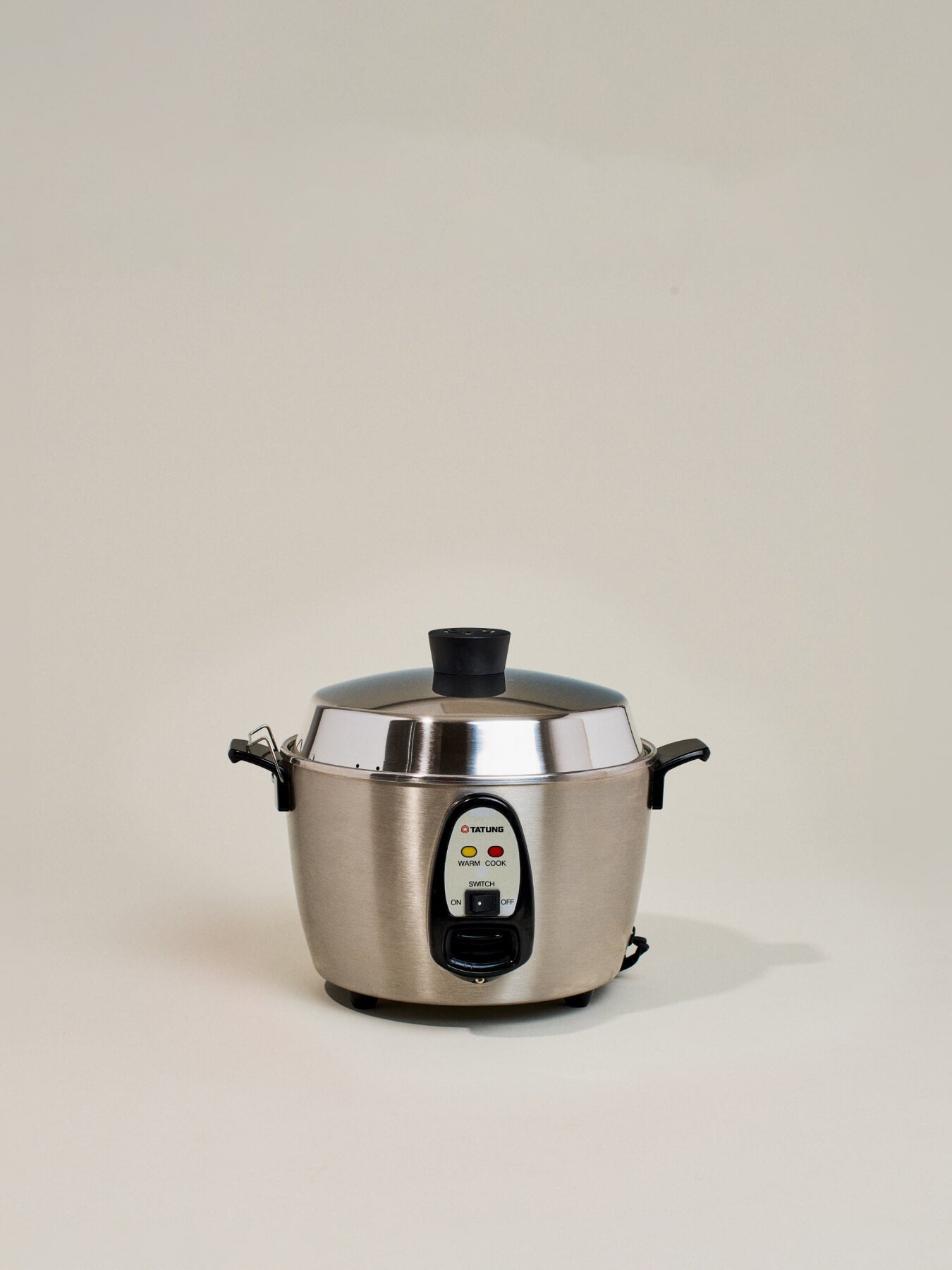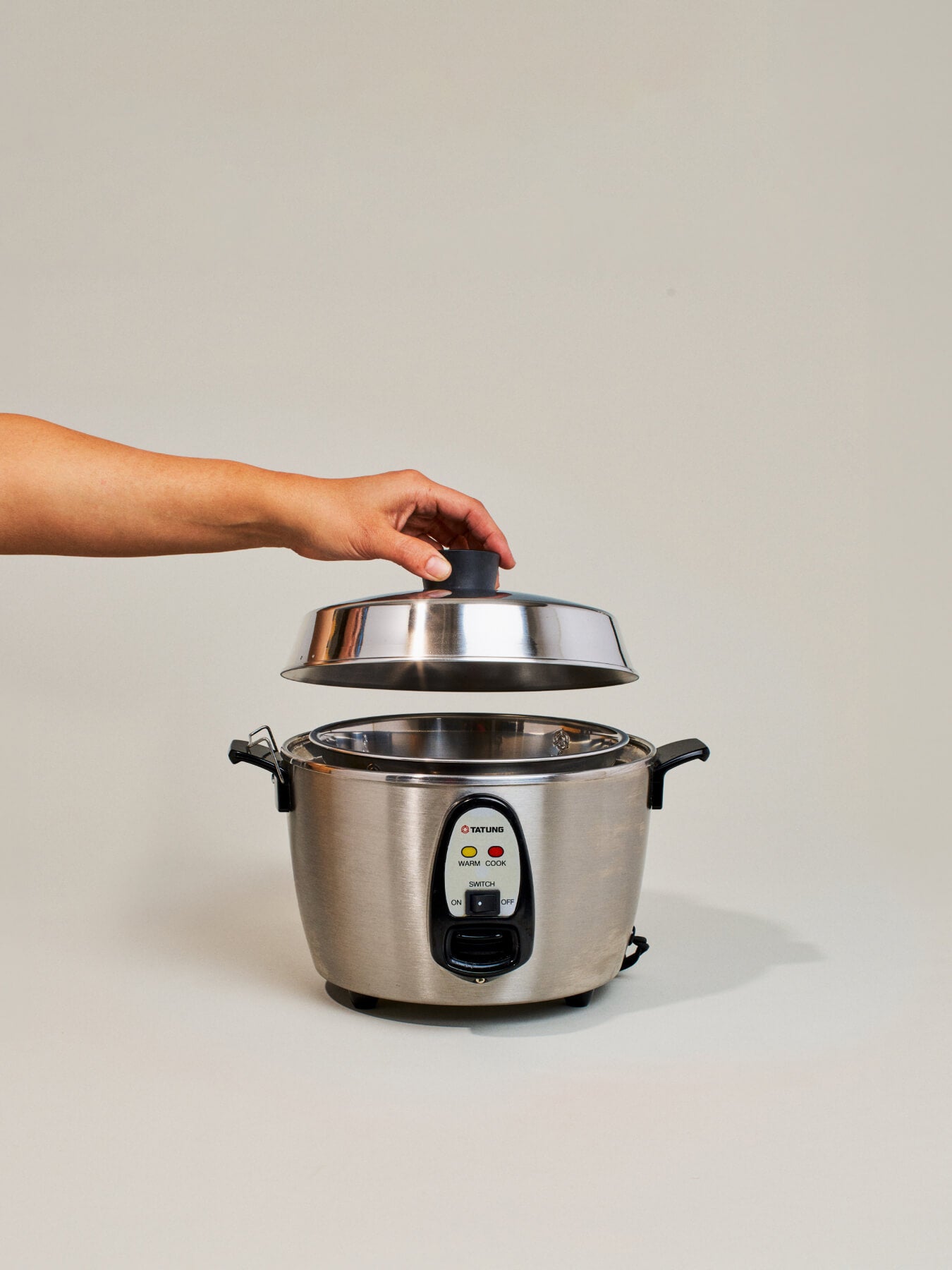This bundle includes both the regular Preserved Daikon Radish and the five-year Aged Preserved Daikon Radish. Use the former to add a piquant snap to your stir-fries and the latter to add sweet, earthy depth to your soups.
Preserving and aging daikon radishes is a fundamental culinary practice in Taiwan, particularly among the Hakka people, a migratory group with Chinese ancestry that now makes up around 15% of Taiwan’s population.
Meinong Farmers‘ Association makes their preserved daikon radishes from white jade daikon radish 白玉蘿蔔. Although white jade daikon is relatively small—only the size of a karaoke microphone—it has thin skin and fibers, yielding a more finely textured product than those made from bigger varieties.
To make the regular Preserved Daikon Radish, known as Luo Bo Gan 蘿蔔乾 or Cai Po 菜脯, members of the farmers’ association slice the radish into wedges and massage salt into it over the course of two to three days, ensuring that the moisture is completely drawn out. Then the radish is sun-dried in bamboo baskets for a few more days before packing. All that daikon essence is condensed into a piquant, potent little shred of a thing. It’s got a lovely “cui cui de” 脆脆的 texture. It’s crisp and snappy, reminiscent of the bite in salted jellyfish, pig ear, or a masterful shredded potato stir fry.
Aged Preserved Daikon Radish is made from whole radish. Members of the farmers' association dry-brine the entire root in salt over the course of a month and then further sun-dry it for one to two weeks. During the drying stage, it’s kneaded and pressed daily to make sure all moisture is removed. Next, they place the radish into a vat (repurposed from alcohol brewing) to age for five years, during which enzymes and microbes turn the radishes near black in color and soften the texture significantly. Finally, the radishes undergo one last round of sun-drying before being packed. The resulting product has a complex flavor that melds deep earthy notes with an almost plum-like sweetness.
Tasting Notes and Usage
Preserved Daikon Radish:
Piquant, salty, and potent with a snappy, crisp texture that can be described as “cui cui de” 脆脆的
Soak in water for 5 minutes, then rinse and drain to remove excess salt.
Add whole to chicken soup or dice and make Preserved Radish Omelet 菜脯蛋. Also great for adding saltiness to stir-fries.
–
Aged Preserved Daikon Radish:
Complex and earthy with a plum-like sweetness and a soft, supple texture
Soak in water for 5 minutes, then rinse and drain to remove excess salt.
Slice and use in soups, such as Old Radish Soup 老菜脯湯. Pro tip: extract the flavor from the radish by simmering it in water in a Tatung steamer before using the resulting stock in other applications.
Ingredients and Instructions
Preserved Daikon Radish:
White jade daikon radish, salt
200 g / 7.05 oz
Additive-free
Store in a cool, dry place. If left for a long time, the preserved radish will continue to ferment (like the aged ones!). After its best-by date, the preserved radish is still usable, but the texture will not be as optimal for stir-fries. Instead, save it to flavor soups.
–
Aged Preserved Daikon Radish:
White jade daikon radish, salt
200 g / 7.05 oz
Additive-free
Store in a cool, dry place. Despite the best before date printed on the package, this radish can be left to age.
About Meinong Farmers' Association
Founded in 1919, the Meinong Farmers' Association 美濃農會 stewards the Meinong Plains 美濃平原, a Hakka area with over 3,000 acres of fertile land just northeast of Kaohsiung. Twenty years ago, Meinong was known for tobacco cultivation. Local farmers would grow a little bit of radish next to the tobacco for their own sustenance. However, when Taiwan joined the World Trade Organization in 2002 and tobacco companies stopped contracting Taiwanese farmers for tobacco leaves, Meinong decided to commercialize the radish.
Meinong only grows chun yang 朝陽 radish, also known as white jade 白玉 radish. Radishes are planted in September, then harvested and preserved between October and December. Once harvested, members of the association preserve both the radish and its leaves. While the radishes are sold as Preserved Daikon Radish and Aged Preserved Daikon Radish, the leaves are pickled into Luo Bo Miao 蘿蔔苗.
